Kelly Jensen's Blog, page 121
February 18, 2014
Cruel Beauty by Rosamund Hodge
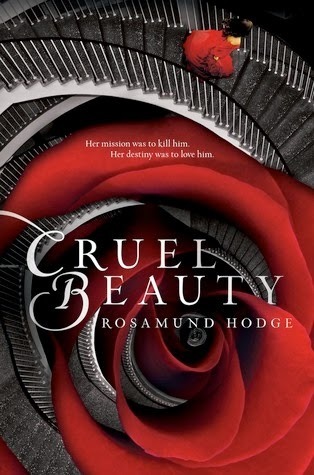 From the time Nyx was a small child, not even ten years old, she knew she would marry the Gentle Lord, the terrible master of demons who has ruled Arcadia for the past 900 years. Before Nyx's birth, her father made a bargain with the Gentle Lord. He and his wife, Nyx's mother, hoped so desperately for children. The Gentle Lord told him they could have them - two children, though girls. In return, the Lord required one of the girls to become his bride at seventeen.
From the time Nyx was a small child, not even ten years old, she knew she would marry the Gentle Lord, the terrible master of demons who has ruled Arcadia for the past 900 years. Before Nyx's birth, her father made a bargain with the Gentle Lord. He and his wife, Nyx's mother, hoped so desperately for children. The Gentle Lord told him they could have them - two children, though girls. In return, the Lord required one of the girls to become his bride at seventeen. But the Gentle Lord always deceives, even while speaking words that have the ring of truth. Nyx's mother died in childbirth, and in his grief, Nyx's father decided that Nyx - the girl who looked most like him - would be sacrificed to the Gentle Lord upon her seventeenth birthday, marrying him in hopes of killing him and avenging the mother she never knew. It is also hoped that by killing him, Arcadia will return to its former splendor, that the sun and stars will return, that the demons who came with the Gentle Lord will be forever banished.
So Nyx has been trained her whole life on how to kill the Gentle Lord. Her twin sister, born mere seconds after her, has been coddled and lied to, told that Nyx's mission is achievable, even easy. Nyx knows better. She knows that she's being sent as a sacrifice and that her mission is a fantasy. Her resentment is powerful. She hates her father for his choice, she hates her mother for dying, and she hates her sister for her smiles and her optimism and the fact that she will live a long, long life.
Nyx's story begins the day before her wedding, and the anticipation leading up to her first meeting with the Gentle Lord is almost excruciating. As readers, we know that this is a re-telling of Beauty and the Beast, but we don't know how Hodge is shaking things up. She masterfully builds the tension and doesn't let it snap until the very end.
I'm kind of amazed this is a debut. The writing is so polished, almost always lovely. I was engaged the entire time and read it in a single sitting. (This is something I very rarely do.) The pacing is excellent, which really sets this a notch above many other debuts; uneven pacing is often a hallmark of a first novel.
What I may have liked most about Cruel Beauty is how Hodge turns the idea of a pure, innocent, and good-hearted fairy tale heroine completely on its head. I don't mean that Hodge's heroine is a girl who "doesn't allow herself to be victimized," which is actually a rather common trope and a problematic one at that. Instead, Hodge has created in Nyx a character - a protagonist, importantly - who is cruel. Not all the time, of course. Not even most of the time, but sometimes. And it's not passing cruelty. She hates her sister - not the kind of hate that washes over you and passes quickly, but the kind of hate that lingers, that takes root in your heart and lives there for years. It's not the only emotion Nyx feels for her sister. Like in most of us, intense hatred commingles with intense love. It's human. Nyx is painfully human.
It's important to see characters like this in our novels, but it's especially well-done here because Nyx's cruelty - her impure heart, as it's often described in a fairy tale - is what makes her a match for the Gentle Lord, who is more overtly cruel. Their shared cruelty is even more important, plot-wise, near the end of the story. This is how Hodge simultaneously honors fairy tales and subverts them, and it's incredibly effective.
Stories inspired by Beauty and the Beast are always in danger of dipping into abusive relationship territory. A lot of re-tellings ask the reader to excuse abusive behavior - both physical and psychological - on the part of the hero by giving him a tragic backstory. They disguise the abuse as exaggerated misunderstandings. That's not how it's done here. To reveal too much would ruin some of the discovery of the novel, but I can say that one of the main reasons this book is different is there is no threat of sexual violence from the Gentle Lord. The other characters expect it, certainly, but that implication comes from them.
What else do I love about this book? I love how it incorporates Greek mythology in a way that makes it fresh again. I love that it sneaks in bits of other fairy tales, like Easter eggs for the reader to discover. I love how creative the plot is, how it uses something almost all of us recognize and gives us something completely new at the same time. I love how all the myths and stories and little details come together at the end, making this such a smart book. I love the ever-changing castle of the Gentle Lord, and how clearly Hodge is able to describe it to her readers, inspiring interest and awe. I love that its conflict, while magical, is rooted in complex humans. I love its magic, too, which has rules and is used as something more than a convenient plot device or deus ex machina. I love that it's full of how the things we say can be misunderstood, how our words can have double meanings, purposeful or not. I loved nearly all of it.
I did have quibbles with the very end. There's a huge plot twist, which does make sense and is true to the rest of the book, but its effects seem rushed. I feel like Hodge was trying to cram a whole new book into the last 40 pages. There was enough story there to cover an entirely new book, though I don't think that would have been a wise decision either. This weakness is not enough to erase everything that came before, though, and Hodge still brings her story to a thoroughly satisfying conclusion - tender and true to her cruel/kind characters.
Review copy provided by the publisher. Cruel Beauty is available now.







 Related StoriesBright Before Sunrise by Tiffany SchmidtSeries ConclusionsTeen Dating Violence Awareness Month: A Discussion and Reading Guide
Related StoriesBright Before Sunrise by Tiffany SchmidtSeries ConclusionsTeen Dating Violence Awareness Month: A Discussion and Reading Guide
Published on February 18, 2014 22:00
February 17, 2014
How to Talk Tough Books to Teens
How do adults read books for teens?
This is one of the questions that Liz Burns explores in a post she wrote last week over at Tea Cozy. I talked about this a little bit in a piece I wrote up on Tumblr last week, too, in light of how important it is to respect teenagers.
How do readers sometimes react when they read books for teens?
This is one of the things that Carrie Mesrobian ponders in an excellent post over at Teen Librarian Tool box. More than that, she delves into separating fiction from artist and how depiction of an action isn't condoning that action. The next day, she and the ladies of YA Highway kicked off a hash tag discussion on Twitter, #SensibleYA, which generated a good piece over at Bustle worth reading.
Both of these questions and the respective responses are worth thinking about when you work with teenagers, and they're as important if you work with teenagers and are responsible for helping guide their reading in some capacity or other. Whether you buy books for a library, work with teens in writing workshops, teach teens in the classroom, write novels, or otherwise connect teens with books and words, it's valuable to regularly step back and reflect upon not just what you're doing but how and why you're doing it. It's really easy to put your adult mindset and experiences and expectations on those teenagers and what it is they're doing and experiencing and forget that they're teenagers -- not miniature adults.
Last week, on one of the librarian listservs, a librarian emailed asking two things: whether anyone had read Carrie Mesrobian's Sex & Violence and/or any other YA books with a proliferation of sex in them and whether anyone had a good argument for changing her mind about recommending those books to teens. Woven into the email was the uncomfortableness with which the librarian felt about reading and recommending books like those.
Stepping back from the fact that Mesrobian's title doesn't feature very much sex -- there's a lot more talking about it than doing it on page -- it was interesting to watch what people had to say about this. Many responses said they'd read the title, and then a separate string of responses noted that there were a number of great YA novels featuring positive and empowering sexual experiences.
What was never answered, though, was the second part of the question and perhaps the part of the question that was most important: how to talk about and recommend these books to teen readers.
When we're put into the position as adults to be responsible for working with teenagers, there are times we're going to be uncomfortable with what we're asked to do or talk about. The thing is, when you work with adults, you're put into a lot of uncomfortable positions, too, but it seems much less world-changing than it does when faced with teens. For some reason, it's easier to guide adults who are asking about health-related topics toward resources than it is to guide teens who are asking similar questions. I think part of this has to do with feeling more like a peer than an advocate/guardian, and I think part of it is that sometimes, we're plain scared to talk with teenagers about really heavy stuff.
Maybe it's that we're being protective. Maybe it's that we're worried about what the parents may do or say or think if they knew you gave that teen a book or talked with them about a topic that's tougher to broach. Maybe it's that sometimes it's what Liz and Carrie got at in their posts: we are too invested in our own adult worlds and beliefs about the adult world that we forget being a teenager can be damn hard in and of itself.
Sometimes, too, it's just that it can be uncomfortable to talk to a teenager about big things. If we aren't comfortable with it, whether consciously or unconsciously, then there's no way we can be comfortable talking about it with someone who can be really influenced by what we say or suggest (that opens up more about influence, too, which I also believe plays a role in our comfort levels -- how much of a role do we REALLY play in the lives and futures of teens is the kind of question that's easily tangled in your head, even if you have a clear picture of what your mission is in working with or for teens).
But back to the question: how? HOW do you talk about these sorts of books with teen readers? Whether your reading skews toward preferring tough topics or avoids it all together, being aware of what books are out there and what content they may or may not contain is important to doing a job of being an advocate for readers and for books themselves.
We read reviews of books in order to make purchase selections in the library, and many readers who work with teens read reviews of books because they enjoy reading reviews -- it gives perspective and depth to what a book is about and can save time and energy in the event that book won't be read. I don't read a lot of speculative fiction personally, but I certainly read a lot of reviews, both in trade journals and around the blogging world, because I need to have an idea what the books are about in order to not only buy them, but to best match them with future readers. The same mentality goes and should go for books which are on these "tougher" topics.
What are "tougher" topics? It's going to depend on each person, but I suspect there are a few everyone would agree on: sex, drugs, drinking, and, trailing way off in the distance, violence.
In many ways, we find talking about and thinking about books about murder easier than we do talking about or thinking about books tackling sex. Dead bodies are easier, for some reason, than ones that are alive and active. It's easier to stand in front of a room of teenagers and talk about a serial killer or a murder mystery than it is to talk about a book about sex and the consequences therein. It's part hook -- it's just easier TO talk about a serial killer than it is to talk about a teen figuring out lines of comfort in sexual situations -- but it's also part culture and fear.
Some of that fear can and should be broached. You should push yourself to talk about books that make you as a reader uncomfortable talking about. It's how you grow professionally, but even more than that, it's how you show yourself an advocate for teens and for reading. If you have the guts and courage to stand in front of a classroom and talk about Mesrobian's book -- hitting that yes, there's sex and yes, there's violence but at heart, it's about a boy learning about consequences related to making decisions -- you show teens that you're not only mature, but that you're willing to discuss heavier topics.
While it may not seem like you're saying that, since you're not using those words, in many ways it's by not saying those words you're sending the message. Plus, teenagers are going to clamor for a book that may have sex in it, period. You could skip the talk all together and just read the title of the book for Mesrobian's and have more willing takers than copies of the title.
Saying "sex" in front of teens shouldn't be a challenge. It's not about being gratuitous. It's about laying things out as they are and owning that. Teens who are ready for it will be ready for it; those who aren't ready for it will tune you out.
A good book talk isn't about the gritty details. It's about the big picture and about selling the book on that. If the book is about sex, that should come up. If sex is but a detail within the book, it doesn't need to be brought up, unless you need to address that there are topics within the book best suited for older readers (and not as a means of censorship nor barring readers -- rather, as a means of covering yourself if confronted about a scene or two in the book which could make more sensitive readers unhappy to discover). Good book talks are a fine dance between giving just enough information to entice a reader and leaving out the big reveals and revelations so that reader can discover them on his or her own.
That said, perhaps the truth is a lot of these "tougher" books aren't best suited for traditional book talking. Maybe it's worthwhile to remember that a lot of these books that can be uncomfortable to talk about are perfect candidates for not just displays, but for shelf talkers, for book lists, and for other means of passive reader's advisory.
Build lists of books together that handle tough topics, being mindful of the language used to present them. These aren't "issue" books -- "issue" and "problem" books went out of vogue decades ago. These are books that tackle tough or sensitive or mature or real life topics instead.
Use the words.
If you're writing a book list about teens who have substance abuse problems, use those words. If you're writing a description for Tim Tharp's The Spectacular Now, don't tiptoe around the fact Sutter has a substance abuse problem. If you're writing a description for a book where the character is sexually abused or raped, note that there is sexual violence in the book. If noting any of these things is going to be a spoiler on the book itself (and many times it can be), then do a good job of being descriptive and thoughtful in creating an introduction to a book list on a topic and listing the titles beneath it well enough that it's clear the books tackle hard topics and don't do so meekly.
Pool together book displays when appropriate and there's a bigger tie-in possible. Although I think doing displays on tougher topics is worthwhile any time, in many ways, it's easier to justify and advocate for them when there's a larger way to marry those books into something else. As I noted last week, February is teen dating violence month -- you have ample opportunity to not just put out a display of books on the topic, but you have opportunities to also present information for local and national/international resources on the topic. An awesome example is this display by Danielle Fortin for sexual assault awareness month in April, which combined books on the topic with resources for teens who may need them.
Use the words.
Make shelf talkers for those tougher books in your collection and don't shy away from calling them what they are. Teens are excellent self-censors and will know whether that book is for them or not if they're able to read what it's about. Likewise, offering shelf talkers and displays that use the words for situations that may arise within the book is a safety net for the parents, too: if they are browsing with their teens for books, there's not going to be a surprise. And the more you feature a combination of books that do include tougher topics, the more it becomes clear these are topics that exist in the books because they also exist in teen lives.
Which isn't, of course, to say you only feature those books on shelf talkers or on displays. You incorporate them with other books, showcasing the breadth and range of titles out there.
Advocating for teens means allowing yourself discomfort. It's unavoidable, even for those who don't shy away from much. The trick is not showing that discomfort unless doing so is advantageous -- and sometimes it can be. Perhaps there are times acknowledging your discomfort during a reading experience can be what sells the title. Did reading Sex & Violence make you uncomfortable? Unpack that in a one-on-one reader's advisory interaction with a teen if it seems like that book might be a good fit for him or her. That not only sells the book to the reader, but it also shows the reader you're not a robot. Even though you're an adult, you, too, find things uncomfortable or funny or weird or strange (any of those words you could attribute to that book or the content within in -- use those words and use the words "sex" and "violence" and "consequences," too).
Respect books geared toward a teen readership. Respect that the teen years are a range of experiences, maturities, needs, and wants. Respect that often those books reflect that, either by taking on hard subjects in an unflinching manner or by showcasing stories meant for those who are 17 or 18 and seeking heavy literary works or by going the opposite and providing light hearted reads, books that are meant simply to be funny or are meant for those 12 and 13 year old readers just entering some of the hardest, most frustrating, and most confusing years of their lives as they're coming into their own.
What it comes down to is being honest and being thoughtful with that honesty. Use the right words. Don't shy away from using them and don't shy away from discussing them. What you may find yourself wincing at within a teen book may be the very thing a teen needs to read or the very thing that also makes a teen wince. The more you work with books tackling tough topics and the more you put those things out there in an accessible, honest manner, the easier it becomes to incorporate them into reader's advisory, into recommendations, into book talks, and the easier it becomes to understand not just the books, but the teens who are seeking them out.
The easier it becomes, too, to be a better ally for those teens because you begin seeing them as teens.






 Related StoriesObservations Upon Weeding: What My Teens Aren't ReadingA Roundup of Our Reader's Advisory PostsGuest Post: Scott Rader on Fandom, Fanmixes, and Reader's Advisory
Related StoriesObservations Upon Weeding: What My Teens Aren't ReadingA Roundup of Our Reader's Advisory PostsGuest Post: Scott Rader on Fandom, Fanmixes, and Reader's Advisory
This is one of the questions that Liz Burns explores in a post she wrote last week over at Tea Cozy. I talked about this a little bit in a piece I wrote up on Tumblr last week, too, in light of how important it is to respect teenagers.
How do readers sometimes react when they read books for teens?
This is one of the things that Carrie Mesrobian ponders in an excellent post over at Teen Librarian Tool box. More than that, she delves into separating fiction from artist and how depiction of an action isn't condoning that action. The next day, she and the ladies of YA Highway kicked off a hash tag discussion on Twitter, #SensibleYA, which generated a good piece over at Bustle worth reading.
Both of these questions and the respective responses are worth thinking about when you work with teenagers, and they're as important if you work with teenagers and are responsible for helping guide their reading in some capacity or other. Whether you buy books for a library, work with teens in writing workshops, teach teens in the classroom, write novels, or otherwise connect teens with books and words, it's valuable to regularly step back and reflect upon not just what you're doing but how and why you're doing it. It's really easy to put your adult mindset and experiences and expectations on those teenagers and what it is they're doing and experiencing and forget that they're teenagers -- not miniature adults.
Last week, on one of the librarian listservs, a librarian emailed asking two things: whether anyone had read Carrie Mesrobian's Sex & Violence and/or any other YA books with a proliferation of sex in them and whether anyone had a good argument for changing her mind about recommending those books to teens. Woven into the email was the uncomfortableness with which the librarian felt about reading and recommending books like those.
Stepping back from the fact that Mesrobian's title doesn't feature very much sex -- there's a lot more talking about it than doing it on page -- it was interesting to watch what people had to say about this. Many responses said they'd read the title, and then a separate string of responses noted that there were a number of great YA novels featuring positive and empowering sexual experiences.
What was never answered, though, was the second part of the question and perhaps the part of the question that was most important: how to talk about and recommend these books to teen readers.
When we're put into the position as adults to be responsible for working with teenagers, there are times we're going to be uncomfortable with what we're asked to do or talk about. The thing is, when you work with adults, you're put into a lot of uncomfortable positions, too, but it seems much less world-changing than it does when faced with teens. For some reason, it's easier to guide adults who are asking about health-related topics toward resources than it is to guide teens who are asking similar questions. I think part of this has to do with feeling more like a peer than an advocate/guardian, and I think part of it is that sometimes, we're plain scared to talk with teenagers about really heavy stuff.
Maybe it's that we're being protective. Maybe it's that we're worried about what the parents may do or say or think if they knew you gave that teen a book or talked with them about a topic that's tougher to broach. Maybe it's that sometimes it's what Liz and Carrie got at in their posts: we are too invested in our own adult worlds and beliefs about the adult world that we forget being a teenager can be damn hard in and of itself.
Sometimes, too, it's just that it can be uncomfortable to talk to a teenager about big things. If we aren't comfortable with it, whether consciously or unconsciously, then there's no way we can be comfortable talking about it with someone who can be really influenced by what we say or suggest (that opens up more about influence, too, which I also believe plays a role in our comfort levels -- how much of a role do we REALLY play in the lives and futures of teens is the kind of question that's easily tangled in your head, even if you have a clear picture of what your mission is in working with or for teens).
But back to the question: how? HOW do you talk about these sorts of books with teen readers? Whether your reading skews toward preferring tough topics or avoids it all together, being aware of what books are out there and what content they may or may not contain is important to doing a job of being an advocate for readers and for books themselves.
We read reviews of books in order to make purchase selections in the library, and many readers who work with teens read reviews of books because they enjoy reading reviews -- it gives perspective and depth to what a book is about and can save time and energy in the event that book won't be read. I don't read a lot of speculative fiction personally, but I certainly read a lot of reviews, both in trade journals and around the blogging world, because I need to have an idea what the books are about in order to not only buy them, but to best match them with future readers. The same mentality goes and should go for books which are on these "tougher" topics.
What are "tougher" topics? It's going to depend on each person, but I suspect there are a few everyone would agree on: sex, drugs, drinking, and, trailing way off in the distance, violence.
In many ways, we find talking about and thinking about books about murder easier than we do talking about or thinking about books tackling sex. Dead bodies are easier, for some reason, than ones that are alive and active. It's easier to stand in front of a room of teenagers and talk about a serial killer or a murder mystery than it is to talk about a book about sex and the consequences therein. It's part hook -- it's just easier TO talk about a serial killer than it is to talk about a teen figuring out lines of comfort in sexual situations -- but it's also part culture and fear.
Some of that fear can and should be broached. You should push yourself to talk about books that make you as a reader uncomfortable talking about. It's how you grow professionally, but even more than that, it's how you show yourself an advocate for teens and for reading. If you have the guts and courage to stand in front of a classroom and talk about Mesrobian's book -- hitting that yes, there's sex and yes, there's violence but at heart, it's about a boy learning about consequences related to making decisions -- you show teens that you're not only mature, but that you're willing to discuss heavier topics.
While it may not seem like you're saying that, since you're not using those words, in many ways it's by not saying those words you're sending the message. Plus, teenagers are going to clamor for a book that may have sex in it, period. You could skip the talk all together and just read the title of the book for Mesrobian's and have more willing takers than copies of the title.
Saying "sex" in front of teens shouldn't be a challenge. It's not about being gratuitous. It's about laying things out as they are and owning that. Teens who are ready for it will be ready for it; those who aren't ready for it will tune you out.
A good book talk isn't about the gritty details. It's about the big picture and about selling the book on that. If the book is about sex, that should come up. If sex is but a detail within the book, it doesn't need to be brought up, unless you need to address that there are topics within the book best suited for older readers (and not as a means of censorship nor barring readers -- rather, as a means of covering yourself if confronted about a scene or two in the book which could make more sensitive readers unhappy to discover). Good book talks are a fine dance between giving just enough information to entice a reader and leaving out the big reveals and revelations so that reader can discover them on his or her own.
That said, perhaps the truth is a lot of these "tougher" books aren't best suited for traditional book talking. Maybe it's worthwhile to remember that a lot of these books that can be uncomfortable to talk about are perfect candidates for not just displays, but for shelf talkers, for book lists, and for other means of passive reader's advisory.
Build lists of books together that handle tough topics, being mindful of the language used to present them. These aren't "issue" books -- "issue" and "problem" books went out of vogue decades ago. These are books that tackle tough or sensitive or mature or real life topics instead.
Use the words.
If you're writing a book list about teens who have substance abuse problems, use those words. If you're writing a description for Tim Tharp's The Spectacular Now, don't tiptoe around the fact Sutter has a substance abuse problem. If you're writing a description for a book where the character is sexually abused or raped, note that there is sexual violence in the book. If noting any of these things is going to be a spoiler on the book itself (and many times it can be), then do a good job of being descriptive and thoughtful in creating an introduction to a book list on a topic and listing the titles beneath it well enough that it's clear the books tackle hard topics and don't do so meekly.
Pool together book displays when appropriate and there's a bigger tie-in possible. Although I think doing displays on tougher topics is worthwhile any time, in many ways, it's easier to justify and advocate for them when there's a larger way to marry those books into something else. As I noted last week, February is teen dating violence month -- you have ample opportunity to not just put out a display of books on the topic, but you have opportunities to also present information for local and national/international resources on the topic. An awesome example is this display by Danielle Fortin for sexual assault awareness month in April, which combined books on the topic with resources for teens who may need them.
Use the words.
Make shelf talkers for those tougher books in your collection and don't shy away from calling them what they are. Teens are excellent self-censors and will know whether that book is for them or not if they're able to read what it's about. Likewise, offering shelf talkers and displays that use the words for situations that may arise within the book is a safety net for the parents, too: if they are browsing with their teens for books, there's not going to be a surprise. And the more you feature a combination of books that do include tougher topics, the more it becomes clear these are topics that exist in the books because they also exist in teen lives.
Which isn't, of course, to say you only feature those books on shelf talkers or on displays. You incorporate them with other books, showcasing the breadth and range of titles out there.
Advocating for teens means allowing yourself discomfort. It's unavoidable, even for those who don't shy away from much. The trick is not showing that discomfort unless doing so is advantageous -- and sometimes it can be. Perhaps there are times acknowledging your discomfort during a reading experience can be what sells the title. Did reading Sex & Violence make you uncomfortable? Unpack that in a one-on-one reader's advisory interaction with a teen if it seems like that book might be a good fit for him or her. That not only sells the book to the reader, but it also shows the reader you're not a robot. Even though you're an adult, you, too, find things uncomfortable or funny or weird or strange (any of those words you could attribute to that book or the content within in -- use those words and use the words "sex" and "violence" and "consequences," too).
Respect books geared toward a teen readership. Respect that the teen years are a range of experiences, maturities, needs, and wants. Respect that often those books reflect that, either by taking on hard subjects in an unflinching manner or by showcasing stories meant for those who are 17 or 18 and seeking heavy literary works or by going the opposite and providing light hearted reads, books that are meant simply to be funny or are meant for those 12 and 13 year old readers just entering some of the hardest, most frustrating, and most confusing years of their lives as they're coming into their own.
What it comes down to is being honest and being thoughtful with that honesty. Use the right words. Don't shy away from using them and don't shy away from discussing them. What you may find yourself wincing at within a teen book may be the very thing a teen needs to read or the very thing that also makes a teen wince. The more you work with books tackling tough topics and the more you put those things out there in an accessible, honest manner, the easier it becomes to incorporate them into reader's advisory, into recommendations, into book talks, and the easier it becomes to understand not just the books, but the teens who are seeking them out.
The easier it becomes, too, to be a better ally for those teens because you begin seeing them as teens.







 Related StoriesObservations Upon Weeding: What My Teens Aren't ReadingA Roundup of Our Reader's Advisory PostsGuest Post: Scott Rader on Fandom, Fanmixes, and Reader's Advisory
Related StoriesObservations Upon Weeding: What My Teens Aren't ReadingA Roundup of Our Reader's Advisory PostsGuest Post: Scott Rader on Fandom, Fanmixes, and Reader's Advisory
Published on February 17, 2014 22:00
February 16, 2014
Bright Before Sunrise by Tiffany Schmidt
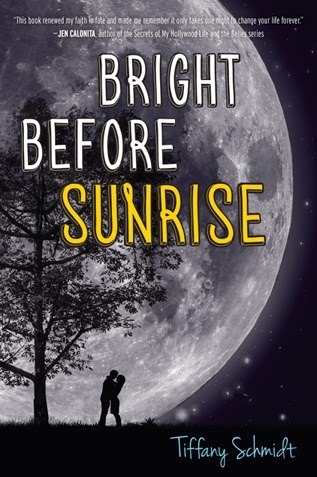 Brighton is the girl everybody likes, which is good because she strives to be liked. To be nice. Except today she's not feeling quite like the "nice" girl she's always been -- her heart aches the day before the anniversary of her father's death and the memorial that her family will be having.
Brighton is the girl everybody likes, which is good because she strives to be liked. To be nice. Except today she's not feeling quite like the "nice" girl she's always been -- her heart aches the day before the anniversary of her father's death and the memorial that her family will be having.Jonah is the new boy in school this year, but he's not bothered trying to fit in. It's senior year, and he's feeling completely out of place in Cross Pointe. He's not rich like these kids, and he's just not one of them. He doesn't have the spirit, and since he gave up baseball, he's just focused on getting out as fast as possible. Of course, there's much more to him than that -- his mom has recently remarried, his father moved away, and he's adjusting to living apart from his girlfriend and long-time friend Carly. And tonight, well, he and Carly might not have a relationship anymore.
Brighton wants nothing more than for Jonah to like her. Jonah wants nothing to do with this and nothing to do with Brighton, and Brighton cannot figure out what it is she's done to upset him. And even though Brighton sounds like she's in this for the reason of wanting to be liked, it's more than that: she wants something from Jonah and she's going to go after it however she can.
No, it's not a relationship. He's standing between her and achieving the goal of having everyone at school complete in a service activity for the year. If she does that, she'll achieve what her father did before her. And she'll feel like she's really done something . . . nice.
Over the course of one day, Brighton and Jonah's worlds will continue to collide in Tiffany Schmidt's Bright Before Sunrise. First on purpose, then by accident, then on purpose. Each of these instances happens authentically and naturally. And over the course of that night, Brighton and Jonah will discover why they are who they are to one another, as well as why this may or may not matter.
Schmidt's sophomore novel is a knock-out. This is a story about what it means to play into the roles that you believe you should fit into, whether you need to or not. Brighton falls into the trap of believing she always needs to be nice and always needs to be liked. Jonah believes he has to shut out all of the things from his present life and live in the past of who he once was, even though he's also shut out so many of the things in his past that made him who he is. Together, the two of them will challenge each other to dig into those roles they're playing and figure out why it is they're playing them. Why can't they just be who they are, rather than be somebody they think they need to be?
This isn't a romance. At least not an initially. There's nothing instant about their connection, and frankly, there's not necessarily a connection that happens between Brighton and Jonah. In the very end, though, Brighton lets down her guard after telling Jonah she's never taken a chance on something -- and she chooses to take that chance on him. Will they end up being together for the long term? Or will this be a short term experience for the two of them? There's nothing clear cut about the end except that it's precisely what Brighton does because of how Jonah convinces her it's something she should consider doing once in a while: taking a chance.
Bright Before Sunrise is a story about examining those roles you choose to play and the reasons you may be playing them. Is it the world around you? Is it your past? Can you shake them off, cast them a middle finger, and then be your true, authentic self? Can all of this happen in one night? What if the right person is begging you to strip down to your barest self? This is much more of a character-driven story than it is an action- or plot- driven one, and both Brighton and Jonah are at times tough to like. But that's what makes them compelling and what pushes the story forward: despite maybe not being the most likable characters (Brighton, I suspect, will endure this label far more than Jonah will by most readers, much in part to her being a female who strives to be liked), it's hard not to care about what it is that drives them both. Brighton's not just mourning, but she's also desperately seeking approval. Why does she need that? What validation does it give her? Jonah, new in school and okay with just skirting by, has not just a tough family situation to contend with, but it's clear that he's also not used to fitting into the social world of the kids in his new school. Schmidt does a good job giving a glimpse into some realistic socioeconomic issues here in a way that never feels like a message nor does it feel like Jonah's a stereotypical "poor kid" now in a "rich kid" school.
The writing is strong, the story moves quickly, and the setting and dialog ring true. It's funny in parts, and there's great romantic tension in parts. There are no world-changing events that happen; the characters bring that with them to the story already. Instead, it's the dissecting of those world-changing events of the past that allow the characters to see one another as they really are -- and that allows them to see themselves as who they really are. It's a story that takes place in one night and one night only, but the revelations from that night have long-lasting ripples. It is hard not to pull for both these characters and what it is they may or may not have with one another.
The tagline to Bright Before Sunrise is "One night can change how you see the world. One night can change how you see yourself," and it's perfectly fitting. If you didn't know, there's been a really enjoyable blog series for Schmidt's novel going on over on Tumblr, where authors and bloggers have all shared the one night that changed their lives. If you're curious, you can read mine here. There's a perfect opportunity to talk the book with that topic, since everyone has one night that they can think of that changed their lives or the way they see themselves -- which is precisely what the book is about.
In many ways this book is reminiscent of Lauren Myracle's The Infinite Moment of Us, where Wren challenges her "good girl"/"nice girl" life by choosing to follow the plans she wants for herself, rather than those expected of her. It's also a little reminiscent of David Levithan and Rachel Cohn's Nick and Norah's Infinite Playlist. Schmidt's novel will certainly appeal to readers who like contemporary realistic YA that feels real. This lands more on the "actual reality" rather than "perceived reality" side of the scale, if there is such a thing. Readers who like romance in their stories should certainly pick this up, as should those readers who love a book that's set in a tight time frame. But again: while there is romance in this book, it's not a cut-and-dry romance, and I emphasize that because what this book is really about is how we challenge ourselves to see ourselves and our lives through different lights -- and how we can choose to make things different.
Bright Before Sunrise will be available tomorrow. Review copy received from the author, with whom I have a relationship.







 Related StoriesTin Star by Cecil CastellucciReligion & Religious Memoirs: Reviews From the OBCB ListWhen I Was The Greatest by Jason Reynolds
Related StoriesTin Star by Cecil CastellucciReligion & Religious Memoirs: Reviews From the OBCB ListWhen I Was The Greatest by Jason Reynolds
Published on February 16, 2014 22:00
February 13, 2014
Series Conclusions
I love book series. They're a staple of fantasy fiction, and almost all of my favorite books are actually series of books. I have a (probably) huge post brewing in my mind about book series and fantasy, which I'll write one day (you're all very excited, I'm sure).
This is not that post. Instead, I wanted to highlight a few series conclusions being published this year that I actually plan on reading. As the years have gone by, I've become much more likely to abandon series I don't love. Much like standalones, there's no obligation to read until the end - life is too short. This is especially true for stories that are made up of three or more books.
But 2014 is looking good for some exciting series conclusions. Below are a few I'm looking forward to.
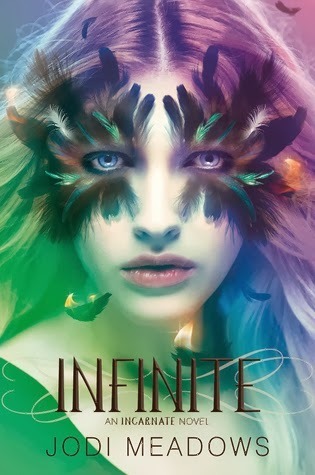
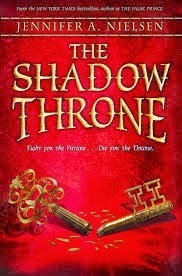
Infinite by Jodi Meadows (January 28)
This is a rare series where the second book is better than the first. I love the concept of a people whose souls never die, simply being reincarnated into new bodies - memories intact. Ana, as a newsoul with no previous lives, is a fascinating protagonist. Meadows handles the relationships between Ana and the other centuries-old people in a deft way, without eliminating the necessary complexity. I'm interested to see where the third book goes. Previous reviews: Incarnate, Asunder
The Shadow Throne by Jennifer A. Nielsen (February 25)
This is standout upper middle grade fiction, fantasy without magic or fairies. Jaron has a great voice, sarcastic and vulnerable at the same time. He's saddled with an incredible amount of responsibility as a teenager. Sometimes he's smart, and sometimes he's just smart-mouthed. Previous reviews: The False Prince, The Runaway King
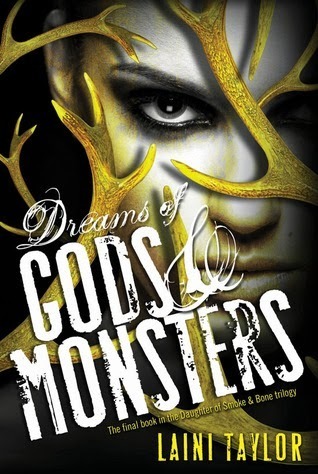
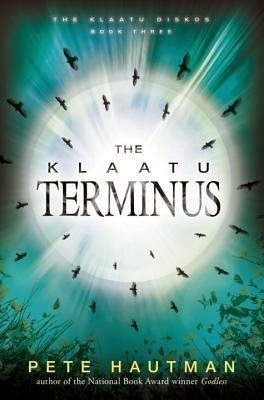
Dreams of Gods and Monsters by Laini Taylor (April 8)
Confession: I have yet to read the second book, Days of Blood and Starlight. I'm going to; I'm practically guaranteed to love it, based on friends' reviews. But for many months, I've been yearning for more light-hearted reads. Daughter of Smoke and Bone drew me in so fully, made me feel so deeply for these characters who are put through so much. It can be difficult to handle sometimes. I'm waiting for the right time to dive back in. Previous review: Daughter of Smoke and Bone
The Klaatu Terminus by Pete Hautman (April 8)
I'm such a cheerleader for these books, which are among the most creative and strange I've ever read. This third and final volume will be written from Kosh's point of view as a teenager in the 90s, and of course it will overlap with Tucker's and Lahlia's stories from books 1 and 2 in interesting and important ways. Worth reading is Hautman's brief essay on what kind of trilogy this is, as compared to other trilogies (like the Hunger Games). Previous reviews: The Obsidian Blade, The Cydonian Pyramid
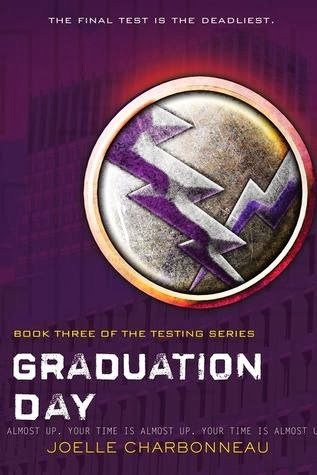
Graduation Day by Joelle Charbonneau (June 17)
I love these books, probably more than they deserve. They're fast-paced, exciting, and thoroughly engrossing. They're perfect readalikes for Hunger Games fans - possibly because they are so similar, but also because they cause the same sort of frantic page-turning, can't-look-away, try-not-to-breathe feeling in the reader. Previous reviews: The Testing, Independent Study
What series conclusions are you excited about?






 Related StoriesTeen Dating Violence Awareness Month: A Discussion and Reading GuideMini-trend: CircusesHardcover to Paperback: Six YA Redesigns to Consider
Related StoriesTeen Dating Violence Awareness Month: A Discussion and Reading GuideMini-trend: CircusesHardcover to Paperback: Six YA Redesigns to Consider
This is not that post. Instead, I wanted to highlight a few series conclusions being published this year that I actually plan on reading. As the years have gone by, I've become much more likely to abandon series I don't love. Much like standalones, there's no obligation to read until the end - life is too short. This is especially true for stories that are made up of three or more books.
But 2014 is looking good for some exciting series conclusions. Below are a few I'm looking forward to.


Infinite by Jodi Meadows (January 28)
This is a rare series where the second book is better than the first. I love the concept of a people whose souls never die, simply being reincarnated into new bodies - memories intact. Ana, as a newsoul with no previous lives, is a fascinating protagonist. Meadows handles the relationships between Ana and the other centuries-old people in a deft way, without eliminating the necessary complexity. I'm interested to see where the third book goes. Previous reviews: Incarnate, Asunder
The Shadow Throne by Jennifer A. Nielsen (February 25)
This is standout upper middle grade fiction, fantasy without magic or fairies. Jaron has a great voice, sarcastic and vulnerable at the same time. He's saddled with an incredible amount of responsibility as a teenager. Sometimes he's smart, and sometimes he's just smart-mouthed. Previous reviews: The False Prince, The Runaway King


Dreams of Gods and Monsters by Laini Taylor (April 8)
Confession: I have yet to read the second book, Days of Blood and Starlight. I'm going to; I'm practically guaranteed to love it, based on friends' reviews. But for many months, I've been yearning for more light-hearted reads. Daughter of Smoke and Bone drew me in so fully, made me feel so deeply for these characters who are put through so much. It can be difficult to handle sometimes. I'm waiting for the right time to dive back in. Previous review: Daughter of Smoke and Bone
The Klaatu Terminus by Pete Hautman (April 8)
I'm such a cheerleader for these books, which are among the most creative and strange I've ever read. This third and final volume will be written from Kosh's point of view as a teenager in the 90s, and of course it will overlap with Tucker's and Lahlia's stories from books 1 and 2 in interesting and important ways. Worth reading is Hautman's brief essay on what kind of trilogy this is, as compared to other trilogies (like the Hunger Games). Previous reviews: The Obsidian Blade, The Cydonian Pyramid

Graduation Day by Joelle Charbonneau (June 17)
I love these books, probably more than they deserve. They're fast-paced, exciting, and thoroughly engrossing. They're perfect readalikes for Hunger Games fans - possibly because they are so similar, but also because they cause the same sort of frantic page-turning, can't-look-away, try-not-to-breathe feeling in the reader. Previous reviews: The Testing, Independent Study
What series conclusions are you excited about?







 Related StoriesTeen Dating Violence Awareness Month: A Discussion and Reading GuideMini-trend: CircusesHardcover to Paperback: Six YA Redesigns to Consider
Related StoriesTeen Dating Violence Awareness Month: A Discussion and Reading GuideMini-trend: CircusesHardcover to Paperback: Six YA Redesigns to Consider
Published on February 13, 2014 22:00
February 12, 2014
Teen Dating Violence Awareness Month: A Discussion and Reading Guide
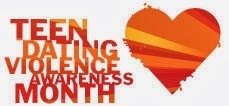
Did you know that February is Teen Dating Violence Awareness Month? I had no idea until I saw someone talking about it, and I thought it would be more than worthwhile to talk a bit about why having a month of awareness of this topic is important, as well as offer some discussion fodder and a reading list of YA fiction that delves into teen dating violence.
According to the Centers for Disease Control, a 2011 survey of teens found that 9.4% of teens reported having been in a romantic relationship that resulted in them being hit, slapped, or physically hurt on purpose in the last twelve months. Sit with that a minute: in the last year, almost 10% of teens reported having been in a relationship that involved violence. If we believe that at least that much did not report violence in their relationship -- and anyone who went to high school and took one of these surveys knows what they involve -- that is a huge and startling statistic.
In addition to that, 1 in 5 females and 1 in 7 males report having been sexually assaulted, raped, physically hurt, or stalked by a romantic partner; those statistics are for those aged 11 to 17.
Twenty percent of women between the ages of 11 and 17 have reported being raped, assaulted, or stalked by a romantic partner and fourteen percent of men between the ages of 11 and 17 have reported being raped, assaulted, or stalked by a romantic partner.
These numbers were reported in a survey separate from the one above, so considered separately and considered together, those numbers are frightening.
Starting a conversation about this topic can be difficult, but I think it's one that's important to keep aware of and know the statistics about because it should be informative in working with teens. Whether you're an educator or a librarian or teen advocate in some capacity (which includes writers for teens, readers who appreciate YA fiction, bloggers, and so forth), being ignorant of what teens experience or are familiar with because of their peers' experiences can be more harmful than helpful. Fortunately, aside from the statistics that exist, there are excellent resources for building your awareness of teen dating violence, as well as excellent teen novels that tackle this delicate issue in ways that are not only helpful, but can be the door that invites important conversation.
Despite what we can think as adults, teens are aware of these issues and not only are they aware of them, they're not afraid to talk about them. It's us as adults who are more fearful to broach the issues for fears we may do or say wrong or -- in a worse case scenario -- we fear that we might put ideas into "impressionable minds." Let's be real though: teens know. Teens aren't impressionable in that way. What can and does make an impression is being willing to be an advocate and an open conversationalist to, for, and with these teens. That knowledge that you care can change their world.
Select Resources
Last April, I wrote a guide to discussing sex, sexual assault, and rape, so I won't go too much into that here. But I do want to point to a project being built by Teen Librarian Toolbox, called the Sexual Violence in Young Adult Literature Chat. The ongoing project, which is supplemented by the linked tumblr account, is meant to foster conversation about sexual violence in a manner that helps empower readers and teen advocates in not only their ability to think about this challenging topic, but also to foster conversation with teens themselves.
Become familiar with Teen Dating Violence Awareness Month's site. This online hub is a space for discussing and advocating for the efforts of promoting and raising awareness of teen dating violence. There are a wealth of resources, including dating abuse helplines and a wealth of public awareness campaigns. Those campaign sites will offer even more great resources and helpful tips for raising your own awareness, as well as for becoming a stronger advocate for teens.
The Teen Dating Violence site is an arm of love is respect, which is another site you should have on your radar. This resource is one that would be especially useful for teen themselves, as it offers a tool defining what dating violence is. Again, the statistics are that roughly 10% of teens reported being in a physically harmful relationship; it's not always obvious to teens (just like it's not always obvious to adults!) when a relationship is abusive.
Although I don't think that the US Department of Health and Human Services site offers the most useful information, I'm linking to it because it does offer tips and help as to cultivating conversations about Teen Dating Violence Awareness Month. This is the toolkit for adults to talk about this month and what the purpose behind the campaign is. It offers some downloadable and printable fact sheets that could be valuable in displays, on social media, or on physical bulletin boards.
Dating Violence in YA Fiction
Since I covered sexual violence last spring, I'm focusing this list more specifically on dating violence. All of these are YA titles, and each has some component of relationship violence -- and I'm not going to shy away from it: some of these books can be really challenging to read because of that. But I think knowing about them, talking about them, and having them available for teens can be invaluable in fostering important conversations, if not for helping a teen in one of these situations realize what's going on is not okay.
All descriptions come from WorldCat, and I know this is far from a complete list. Please feel free to add more to this list, especially books where the male main character may be suffering from dating violence. I find that there is often a lacking in stories about relationship violence -- verbal, sexual, or physical -- of the male being the victim. Which isn't to say the stories of females being victims aren't important (they definitely are, and as noted, they are more frequently the victims), but I think it's just as important to show the other side, too, as it's often the one that's talked about far less. Likewise, there's a dearth of LGBTQ relationships presented.
Since my knowledge is heavier on realistic fiction, that's reflected, but I am aware dating violence shows up in other genres within YA fiction, as well.
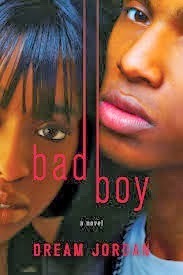

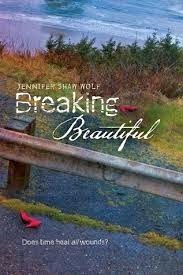
Bad Boy by Dream Jones: Devastated to find herself back in a group home after a peaceful year of living with loving foster parents, a Brooklyn teenager striving to become strong and independent soon falls prey to the dangerous affections of a good looking but shady young man.
Bitter End by Jennifer Brown: When seventeen-year-old Alex starts dating Cole, a new boy at her high school, her two closest friends increasingly mistrust him as the relationship grows more serious.
Breaking Beautiful by Jennifer Shaw Wolf: Allie is overwhelmed when her boyfriend, Trip, dies in a car accident, leaving her scarred and unable to recall what happened that night, but she feels she must uncover the truth, even if it could hurt the people who tried to save her from Trip's abuse.
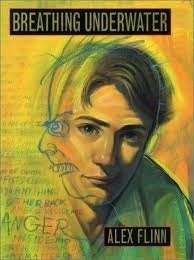
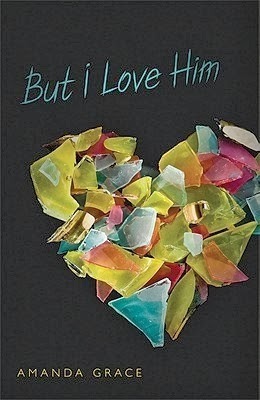
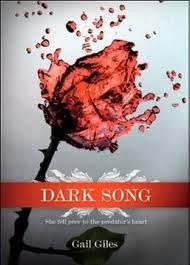
Breathing Underwater by Alex Flinn: Sent to counseling for hitting his girlfriend, Caitlin, and ordered to keep a journal, sixteen-year-old Nick recounts his relationship with Caitlin, examines his controlling behavior and anger, and describes living with his abusive father.
But I Love Him by Amanda Grace: Traces, through the course of a year, Ann's transformation from a happy A-student, track star, and popular senior to a solitary, abused woman whose love for the emotionally-scarred Connor has taken away everything--even herself.
Dark Song by Gail Giles: After her father loses his job and she finds out that her parents have lied to her, fifteen-year-old Ames feels betrayed enough to become involved with a criminal who will stop at nothing to get what he wants.
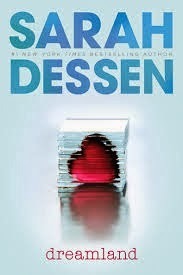
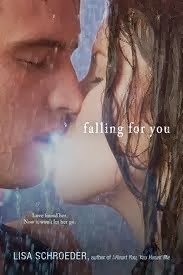
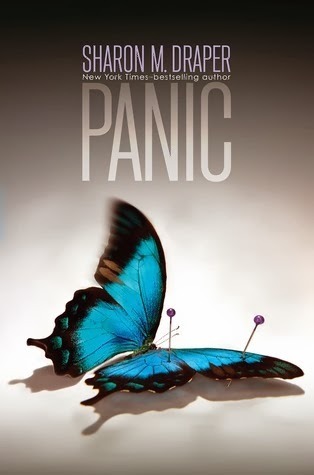
Dreamland by Sarah Dessen: After her older sister runs away, sixteen-year-old Caitlin decides that she needs to make a major change in her own life and begins an abusive relationship with a boy who is mysterious, brilliant, and dangerous.
Falling For You by Lisa Schroeder: Very good friends, her poetry notebooks, and a mysterious "ninja of nice" give seventeen-year-old Rae the strength to face her mother's neglect, her stepfather's increasing abuse, and a new boyfriend's obsessiveness.
Panic by Sharon Draper: As rehearsals begin for the ballet version of Peter Pan, the teenaged members of an Ohio dance troupe lose their focus when one of their own goes missing. (From description it doesn't sound like it's about dating abuse, but that is a storyline among other characters in the book).
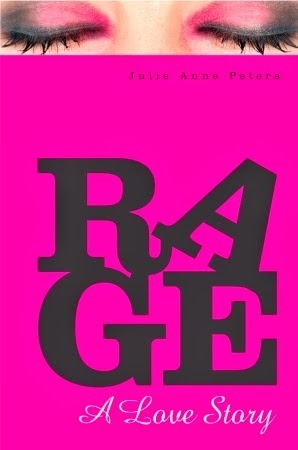
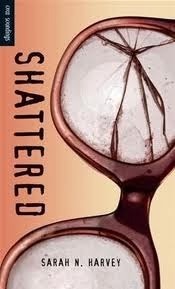
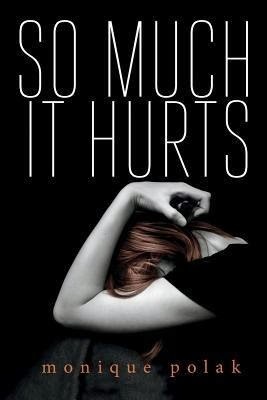
Rage: A Love Story by Julie Anne Peters: At the end of high school, Johanna finally begins dating the girl she has loved from afar, but Reeve is as much trouble as she claims to be as she and her twin brother damage Johanna's self-esteem, friendships, and already precarious relationship with her sister.
Shattered by Sarah N. Harvey: After March shoves her boyfriend and he ends up in a coma, she tries to figure out what it means to have a perfect life.
So Much It Hurts by Monique Polak: A teen actress gets involved with an older director, whose explosive temper and controlling behavior threaten to destroy her life.
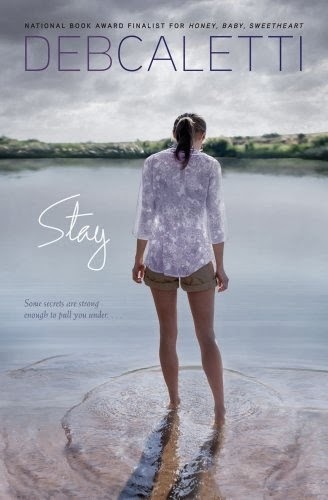
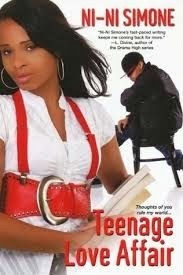
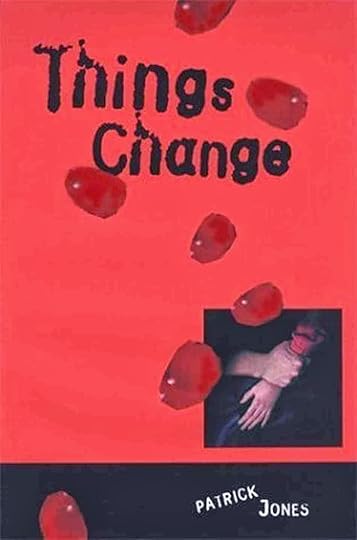
Stay by Deb Caletti: In a remote corner of Washington State where she and her father have gone to escape her obsessive boyfriend, Clara meets two brothers who captain a sailboat, a lighthouse keeper with a secret, and an old friend of her father who knows his secrets.
Teenage Love Affair by Ni-Ni Simone: Seventeen-year-old Zsa-Zsa is torn between her current boyfriend who is abusive and her first love, Malachi.
Things Change by Patrick Jones: Sixteen-year-old Johanna, one of the best students in her class, develops a passionate attachment for troubled seventeen-year-old Paul and finds her plans for the future changing in unexpected ways.







 Related StoriesGet Genrefied: YA Urban FictionMini-trend: CircusesHardcover to Paperback: Six YA Redesigns to Consider
Related StoriesGet Genrefied: YA Urban FictionMini-trend: CircusesHardcover to Paperback: Six YA Redesigns to Consider
Published on February 12, 2014 22:00
February 11, 2014
Mini-trend: Circuses
I've noticed that circuses have become a bit of a thing in YA fiction lately (two of the seven Cybils finalists feature a circus). While I was never one of those kids who dreamed about running away to the circus, I get the appeal for characters (and readers) who feel like they've never quite fit in the "normal" world. Perhaps the circus, traditionally seem as a place that showcases outcasts, would provide a more welcoming home.
It's possible that the Night Circus is the forerunner to this trend, though I didn't include it here on this list. Darren Shan's Cirque du Freak may also be a predecessor. All descriptions are from Worldcat. What other recent or upcoming YA titles feature circuses heavily?

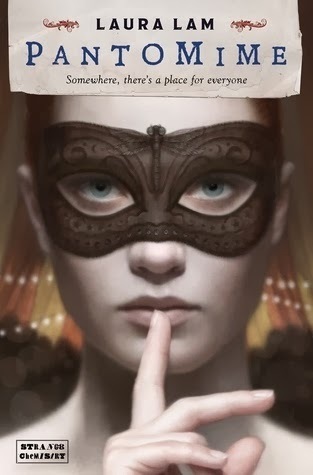
Conjured by Sarah Beth Durst
Haunted by disturbing dreams and terrifying visions, a teenaged girl in a paranormal witness protection program must remember her past and why she has strange abilities before a magic-wielding serial killer hunts her down. [This description is no good for this post, so I'll elaborate: the terrifying visions are of a circus.]
Pantomime by Laura Lam (plus its sequel, Shadowplay)
Gene, the daughter of a noble family, runs away from the decadence of court to R.H. Ragona's circus of magic, where she meets runaway Micah, whose blood could unlock the mysteries of the world of Ellada. [This description is terrible in general. I'll talk more about this book in a week or so.]
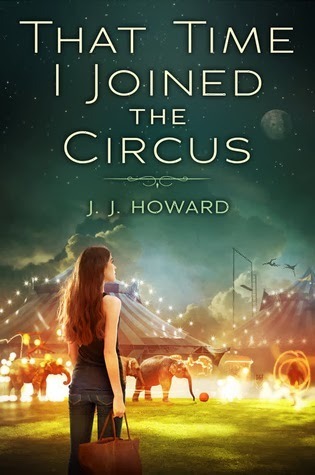
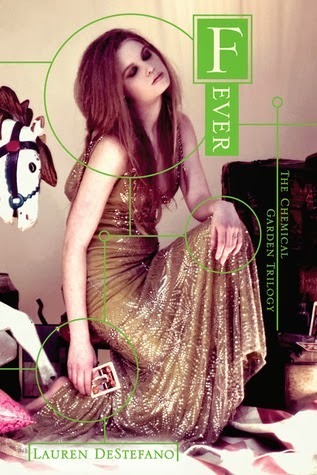
That Time I Joined the Circus by J. J. Howard
After her father's sudden death and a break-up with her best friends, seventeen-year-old Lexi has no choice but to leave New York City seeking her long-absent mother, rumored to be in Florida with a traveling circus, where she just may discover her destiny.
Fever by Lauren DeStefano
In a future where genetic engineering has cured humanity of all diseases and defects but has also produced a virus that kills all females by age twenty and all males by the age twenty-five, teenaged Rhine escapes her forced marriage and journeys back to New York to find her twin brother. [Another description that's not particularly useful for this post. On her journey, Rhine is captured by the head of a sinister circus/carnival.]
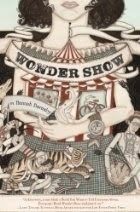
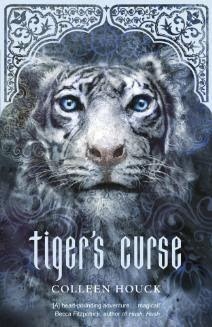
Wonder Show by Hannah Barnaby
Ladies and gentlemen, boys and girls, step inside Mosco's Traveling Wonder Show, a menagerie of human curiosities and misfits guaranteed to astound and amaze! But perhaps the strangest act of Mosco's display is Portia Remini, a normal among the freaks, on the run from McGreavy's Home for Wayward Girls, where Mister watches and waits. He said he would always find Portia, that she could never leave. Free at last, Portia begins a new life on the bally, seeking answers about her father's disappearance. Will she find him before Mister finds her? It's a story for the ages, and like everyone who enters the Wonder Show, Portia will never be the same.
Tiger's Curse by Colleen Houck
Seventeen-year-old Oregon teenager Kelsey forms a bond with a circus tiger who is actually one of two brothers, Indian princes Ren and Kishan, who were cursed to live as tigers for eternity, and she travels with him to India where the tiger's curse may be broken once and for all.
Middle grade is also experiencing the trend:
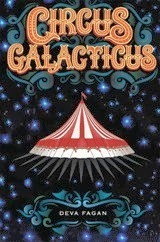
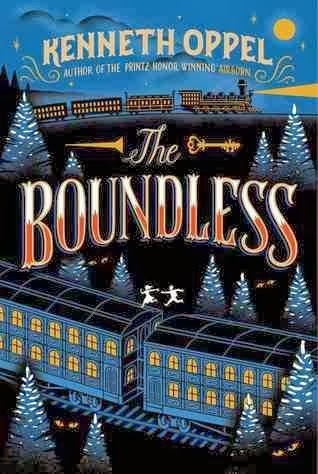
Circus Galacticus by Deva Fagan
Trix's life in boarding school as an orphan charity case has been hard, but when an alluring young Ringmaster invites her, a gymnast, to join Circus Galacticus she gainss an entire universe of deadly enemies and potential friends, along with a chance to unravel secrets of her own past.
The Boundless by Kenneth OppelAboard "The Boundless," the greatest train ever built, on its maiden voyage across Canada, teenaged Will enlists the aid of a traveling circus to save the train from villains.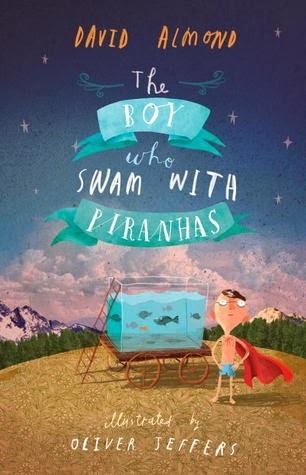
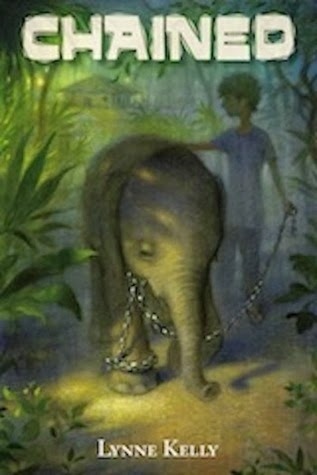
The Boy Who Swam With Piranhas by David AlmondStanley Potts's uncle Ernie has developed an over-the-top fascination with canning fish in the house, and life at 69 Fish Quay Lane has turned balmy. But there's darkness in the madness, and when Uncle Ernie's obsession takes an unexpectedly cruel turn, Stan has no choice but to leave. As he journeys away from the life he's always known, he mingles with a carnival full of eccentric characters and meets the legendary Pancho Pirelli, the man who swims in a tank full of perilous piranhas. Will Stan be bold enough to dive in the churning waters himself and choose his own destiny? Chained by Lynne KellyTo work off a family debt, ten-year-old Hastin leaves his desert village in India to work as a circus elephant keeper but many challenges await him, including trying to keep Nandita, a sweet elephant, safe from the cruel circus owner.







 Related StoriesHardcover to Paperback: Six YA Redesigns to ConsiderWhat I'm Reading NowTin Star by Cecil Castellucci
Related StoriesHardcover to Paperback: Six YA Redesigns to ConsiderWhat I'm Reading NowTin Star by Cecil Castellucci
It's possible that the Night Circus is the forerunner to this trend, though I didn't include it here on this list. Darren Shan's Cirque du Freak may also be a predecessor. All descriptions are from Worldcat. What other recent or upcoming YA titles feature circuses heavily?


Conjured by Sarah Beth Durst
Haunted by disturbing dreams and terrifying visions, a teenaged girl in a paranormal witness protection program must remember her past and why she has strange abilities before a magic-wielding serial killer hunts her down. [This description is no good for this post, so I'll elaborate: the terrifying visions are of a circus.]
Pantomime by Laura Lam (plus its sequel, Shadowplay)
Gene, the daughter of a noble family, runs away from the decadence of court to R.H. Ragona's circus of magic, where she meets runaway Micah, whose blood could unlock the mysteries of the world of Ellada. [This description is terrible in general. I'll talk more about this book in a week or so.]


That Time I Joined the Circus by J. J. Howard
After her father's sudden death and a break-up with her best friends, seventeen-year-old Lexi has no choice but to leave New York City seeking her long-absent mother, rumored to be in Florida with a traveling circus, where she just may discover her destiny.
Fever by Lauren DeStefano
In a future where genetic engineering has cured humanity of all diseases and defects but has also produced a virus that kills all females by age twenty and all males by the age twenty-five, teenaged Rhine escapes her forced marriage and journeys back to New York to find her twin brother. [Another description that's not particularly useful for this post. On her journey, Rhine is captured by the head of a sinister circus/carnival.]


Wonder Show by Hannah Barnaby
Ladies and gentlemen, boys and girls, step inside Mosco's Traveling Wonder Show, a menagerie of human curiosities and misfits guaranteed to astound and amaze! But perhaps the strangest act of Mosco's display is Portia Remini, a normal among the freaks, on the run from McGreavy's Home for Wayward Girls, where Mister watches and waits. He said he would always find Portia, that she could never leave. Free at last, Portia begins a new life on the bally, seeking answers about her father's disappearance. Will she find him before Mister finds her? It's a story for the ages, and like everyone who enters the Wonder Show, Portia will never be the same.
Tiger's Curse by Colleen Houck
Seventeen-year-old Oregon teenager Kelsey forms a bond with a circus tiger who is actually one of two brothers, Indian princes Ren and Kishan, who were cursed to live as tigers for eternity, and she travels with him to India where the tiger's curse may be broken once and for all.
Middle grade is also experiencing the trend:


Circus Galacticus by Deva Fagan
Trix's life in boarding school as an orphan charity case has been hard, but when an alluring young Ringmaster invites her, a gymnast, to join Circus Galacticus she gainss an entire universe of deadly enemies and potential friends, along with a chance to unravel secrets of her own past.
The Boundless by Kenneth OppelAboard "The Boundless," the greatest train ever built, on its maiden voyage across Canada, teenaged Will enlists the aid of a traveling circus to save the train from villains.


The Boy Who Swam With Piranhas by David AlmondStanley Potts's uncle Ernie has developed an over-the-top fascination with canning fish in the house, and life at 69 Fish Quay Lane has turned balmy. But there's darkness in the madness, and when Uncle Ernie's obsession takes an unexpectedly cruel turn, Stan has no choice but to leave. As he journeys away from the life he's always known, he mingles with a carnival full of eccentric characters and meets the legendary Pancho Pirelli, the man who swims in a tank full of perilous piranhas. Will Stan be bold enough to dive in the churning waters himself and choose his own destiny? Chained by Lynne KellyTo work off a family debt, ten-year-old Hastin leaves his desert village in India to work as a circus elephant keeper but many challenges await him, including trying to keep Nandita, a sweet elephant, safe from the cruel circus owner.







 Related StoriesHardcover to Paperback: Six YA Redesigns to ConsiderWhat I'm Reading NowTin Star by Cecil Castellucci
Related StoriesHardcover to Paperback: Six YA Redesigns to ConsiderWhat I'm Reading NowTin Star by Cecil Castellucci
Published on February 11, 2014 22:00
February 10, 2014
Religion & Religious Memoirs: Reviews From the OBCB List
Since the Outstanding Books for the College Bound (OBCB) list is finally live and active, I'm really excited to talk about the books I read this last year and loved. I couldn't intentionally blog about them last year -- though certainly because the scope of our charge was so large, it was impossible to know which titles I had blogged about would show up as potential considerations -- so now that I can, I'm hoping it'll encourage readers to pick up something completely new or consider recommending titles to other readers that may not have otherwise crossed your radar.
I served on two subcommittees of OBCB, reading those titles which fell under the category of Arts and Humanities and those which fell under the Social Science category. I nominated and read and talked about titles in other categories, but the almost fifty titles in my subcommittee lists are all ones I did get a chance to read (with one or two exceptions).
Rather than go down the list and talk about the titles in that order, I thought it would be more worthwhile to talk about them as they relate to different themes. Since I talked a little bit about how much I loved Aaron Hartzler's Rapture Practice yesterday, it seemed fitting to dive in on the titles which explored religion or spirituality.
As someone who isn't particularly religious, I won't lie and say these were the books I was most looking forward to reading or talking about. But I think what makes these books so good and worth talking about is that they all captured my interest despite my own feelings and experiences with religion. There were four books that could really be categorized as "religious" from the Arts and Humanities list, and each one tackles something very different and those very different takes make them really worth reading, discussing, and passing along to other readers.
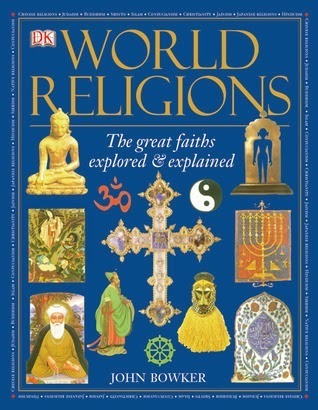 World Religions: The Great Faiths Explored & Explained by John Bowker
World Religions: The Great Faiths Explored & Explained by John Bowker
This is a DK book, which if you're not familiar with, is a publisher that puts together these huge tomes on different topics and explores them in great detail. They tend to be very visually-driven, to the point where I can find them troubling to read because there is so much to wade through.
But it's that abundance of information which makes Bowker's exploration of world religions here great. This isn't a cover-to-cover read. It's a reference text, and it's a bigger book, which makes the browsing factor of this more obvious.
This is an incredibly comprehensive overview of religions that are familiar and those which may be less familiar to readers. There are Western religions and Eastern religions, and what makes this book such a great tool is that it's presented in the most objective manner possible. Bowker doesn't have an agenda; instead, he's offering the who, what, where, when, and why of each of the religious practices, and the book itself then highlights the visual artifacts, symbols, and more that give readers even deeper insight into the various practices.
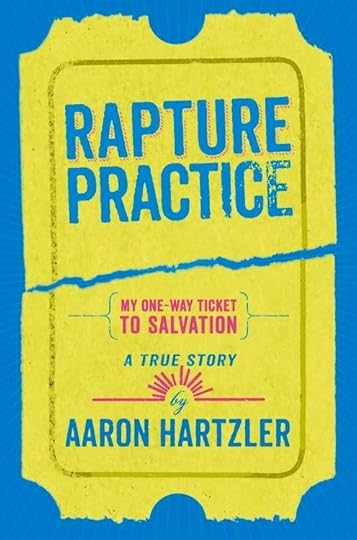
Rapture Practice by Aaron Hartzler
Harzler's memoir was, hands-down, one of my favorite reads in 2013. In fact, as soon as I finished reading it, I was tempted to write a length post about how much I loved it. But instead, I nominated it for committee consideration.
This is a story about Hartzler growing up in a very Evangelical household as he tries to come to terms with his own religious beliefs, as well as his own sexuality. But the second part of that is not out-and-out the focus of the book. This isn't Hartzler's coming out story, and I think knowing that is vital. This is instead his memoir about learning who he is when he's living in an environment that doesn't always encourage that sort of exploration. He knows early on he doesn't have the same affinity toward religious practice and devotion that his parents do, but it's not something he can be as open and honest about as he would like to be.
But what takes this story from being good to great is that Hartzler is incredibly respectful of everyone in the story. While he thinks a lot of what his parents believe -- that the Rapture could happen any minute and they thus need to be prepared -- he is conscious of why it is they believe that and he's okay with it. And a lot of why he is that way is because he hopes that kind of respect can be extended toward him.
Rapture Practice isn't a condemnation of belief or Evangelical practice. It's a story about coming to terms with what it is you believe when you don't necessarily believe in what you've grown up with. There is humor as much as heart in this one, and it has great teen appeal. This is a rare memoir written for and about being a teenager.
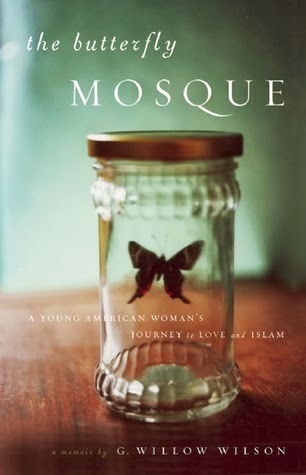 The Butterfly Mosque by G. Willow Wilson
The Butterfly Mosque by G. Willow Wilson
Wilson's memoir was published for adults, but it has great teen appeal. Perhaps maybe more than having appeal for teens, this is the kind of book that college students and those who are just out of college will find tremendously interesting because it explores those post-college years in a way that a lot of other books simply don't.
When Wilson took a course in Islamic Studies in college, she thought she found her path. She wasn't Islamic, but it was a culture that fascinated her, and when she finished college, she decided to move to Egypt and find work. It was meant to be a way to shock herself with a new and different culture, but what it ended up doing was convincing her that converting to Islam was the right path for her.
The book follows as she rectifies the knowledge, experience, assumptions, and privileges she's had her whole life as a westerner as she enters into the middle eastern world. She's very insightful and perceptive, but this never comes off as preachy and it never once comes off as a story about how one culture or experience is better or more right than another. A lot of that comes through when Wilson falls in love with an Egyptian who grew up Islamic -- she has to face the prejudices that his family may have and does have about his wanting to marry someone who converted. Could there be bridges built between their very different worlds?
The Butterfly Mosque also offers some interesting views of what it's like to be a woman in a country where being a woman doesn't allow as many rights as it does in the western world, as well as what it's like to be an Islamic woman in this new world. It's about being a foreigner but wanting to be involved in a new culture without exploiting or using that culture as a means of understanding herself. There are so many wonderful little lines in this book about life and about experiences, but I think the thing that stood out to me the most was that Wilson never comes off as privileged nor does she preach at readers suggesting that the only way to ever live is to have these foreign experiences. Instead, much of her point is that self-reflection is key to finding peace with yourself and beliefs and that self-reflection is precisely what makes you smart, strong, and gives you confidence to face new and challenging things, whatever those things in front of you may be.
There is definitely romance here, and I think for many teen readers, that will be a really great hook to the bigger story. I love, too, that OBCB has both Wilson's memoir, as well as her more well-known novel Alif the Unseen, because it really showcases who she is and what it is she's doing with her career. And she's really young, too, which should inspire readers in its own right.
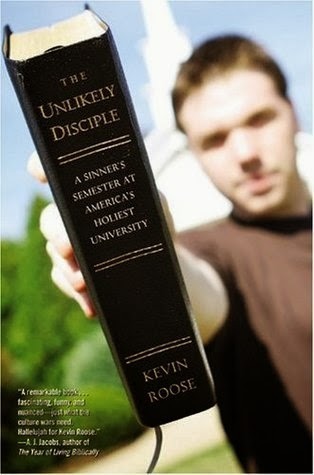 The Unlikely Disciple: A Sinner's Semester at America's Holiest University by Kevin Roose
The Unlikely Disciple: A Sinner's Semester at America's Holiest University by Kevin Roose
I read this book back in 2009, and I actually reviewed it here at STACKED back then, too, so I won't rehash my thoughts on it. One of my hesitations about the book back then was that I had some questions about the authenticity of Roose's experience, as his mentor was A. J. Jacobs and it reminded me a lot of those "do one weird thing for a year for a book deal" situations.
But I didn't let that color my beliefs on the value of having this book on the list because I think that Roose talks about and learns, as well as the respect he comes to develop for students at Liberty University, were important and interesting enough to merit a place. Roose's story replaced Jacobs's A Year of Living Biblically, which was on the 2009 iteration of OBCB, and I think that the replacement was a good one. Not because Jacobs's story is no longer relevant -- it definitely it is -- but because it offers another story, another voice, and another angle on religion and religious practice.
What I find to be interesting in looking at the books on the list in this way, rather than in their big, overarching category of "Arts and Humanities," is that I can see what the biggest theme is uniting all four of these books, and it's a simple one: respect. Each of these books explores religion, both eastern and western practices, in very respectful ways. They're never exploited, and they're never meant to be studies. The three memoirs specifically are experiential, with great reflection offered by the authors. And I think that those sorts of stories are not only relatable to teen (and adult!) readers, but they give a look into a world through a set of eyes that may or may not go in with an agenda but that come out more educated, more respectful, and perhaps more humble.






 Related StoriesTin Star by Cecil CastellucciA Year in Committee LifeHardcover to Paperback: Six YA Redesigns to Consider
Related StoriesTin Star by Cecil CastellucciA Year in Committee LifeHardcover to Paperback: Six YA Redesigns to Consider
I served on two subcommittees of OBCB, reading those titles which fell under the category of Arts and Humanities and those which fell under the Social Science category. I nominated and read and talked about titles in other categories, but the almost fifty titles in my subcommittee lists are all ones I did get a chance to read (with one or two exceptions).
Rather than go down the list and talk about the titles in that order, I thought it would be more worthwhile to talk about them as they relate to different themes. Since I talked a little bit about how much I loved Aaron Hartzler's Rapture Practice yesterday, it seemed fitting to dive in on the titles which explored religion or spirituality.
As someone who isn't particularly religious, I won't lie and say these were the books I was most looking forward to reading or talking about. But I think what makes these books so good and worth talking about is that they all captured my interest despite my own feelings and experiences with religion. There were four books that could really be categorized as "religious" from the Arts and Humanities list, and each one tackles something very different and those very different takes make them really worth reading, discussing, and passing along to other readers.
 World Religions: The Great Faiths Explored & Explained by John Bowker
World Religions: The Great Faiths Explored & Explained by John BowkerThis is a DK book, which if you're not familiar with, is a publisher that puts together these huge tomes on different topics and explores them in great detail. They tend to be very visually-driven, to the point where I can find them troubling to read because there is so much to wade through.
But it's that abundance of information which makes Bowker's exploration of world religions here great. This isn't a cover-to-cover read. It's a reference text, and it's a bigger book, which makes the browsing factor of this more obvious.
This is an incredibly comprehensive overview of religions that are familiar and those which may be less familiar to readers. There are Western religions and Eastern religions, and what makes this book such a great tool is that it's presented in the most objective manner possible. Bowker doesn't have an agenda; instead, he's offering the who, what, where, when, and why of each of the religious practices, and the book itself then highlights the visual artifacts, symbols, and more that give readers even deeper insight into the various practices.

Rapture Practice by Aaron Hartzler
Harzler's memoir was, hands-down, one of my favorite reads in 2013. In fact, as soon as I finished reading it, I was tempted to write a length post about how much I loved it. But instead, I nominated it for committee consideration.
This is a story about Hartzler growing up in a very Evangelical household as he tries to come to terms with his own religious beliefs, as well as his own sexuality. But the second part of that is not out-and-out the focus of the book. This isn't Hartzler's coming out story, and I think knowing that is vital. This is instead his memoir about learning who he is when he's living in an environment that doesn't always encourage that sort of exploration. He knows early on he doesn't have the same affinity toward religious practice and devotion that his parents do, but it's not something he can be as open and honest about as he would like to be.
But what takes this story from being good to great is that Hartzler is incredibly respectful of everyone in the story. While he thinks a lot of what his parents believe -- that the Rapture could happen any minute and they thus need to be prepared -- he is conscious of why it is they believe that and he's okay with it. And a lot of why he is that way is because he hopes that kind of respect can be extended toward him.
Rapture Practice isn't a condemnation of belief or Evangelical practice. It's a story about coming to terms with what it is you believe when you don't necessarily believe in what you've grown up with. There is humor as much as heart in this one, and it has great teen appeal. This is a rare memoir written for and about being a teenager.
 The Butterfly Mosque by G. Willow Wilson
The Butterfly Mosque by G. Willow WilsonWilson's memoir was published for adults, but it has great teen appeal. Perhaps maybe more than having appeal for teens, this is the kind of book that college students and those who are just out of college will find tremendously interesting because it explores those post-college years in a way that a lot of other books simply don't.
When Wilson took a course in Islamic Studies in college, she thought she found her path. She wasn't Islamic, but it was a culture that fascinated her, and when she finished college, she decided to move to Egypt and find work. It was meant to be a way to shock herself with a new and different culture, but what it ended up doing was convincing her that converting to Islam was the right path for her.
The book follows as she rectifies the knowledge, experience, assumptions, and privileges she's had her whole life as a westerner as she enters into the middle eastern world. She's very insightful and perceptive, but this never comes off as preachy and it never once comes off as a story about how one culture or experience is better or more right than another. A lot of that comes through when Wilson falls in love with an Egyptian who grew up Islamic -- she has to face the prejudices that his family may have and does have about his wanting to marry someone who converted. Could there be bridges built between their very different worlds?
The Butterfly Mosque also offers some interesting views of what it's like to be a woman in a country where being a woman doesn't allow as many rights as it does in the western world, as well as what it's like to be an Islamic woman in this new world. It's about being a foreigner but wanting to be involved in a new culture without exploiting or using that culture as a means of understanding herself. There are so many wonderful little lines in this book about life and about experiences, but I think the thing that stood out to me the most was that Wilson never comes off as privileged nor does she preach at readers suggesting that the only way to ever live is to have these foreign experiences. Instead, much of her point is that self-reflection is key to finding peace with yourself and beliefs and that self-reflection is precisely what makes you smart, strong, and gives you confidence to face new and challenging things, whatever those things in front of you may be.
There is definitely romance here, and I think for many teen readers, that will be a really great hook to the bigger story. I love, too, that OBCB has both Wilson's memoir, as well as her more well-known novel Alif the Unseen, because it really showcases who she is and what it is she's doing with her career. And she's really young, too, which should inspire readers in its own right.
 The Unlikely Disciple: A Sinner's Semester at America's Holiest University by Kevin Roose
The Unlikely Disciple: A Sinner's Semester at America's Holiest University by Kevin RooseI read this book back in 2009, and I actually reviewed it here at STACKED back then, too, so I won't rehash my thoughts on it. One of my hesitations about the book back then was that I had some questions about the authenticity of Roose's experience, as his mentor was A. J. Jacobs and it reminded me a lot of those "do one weird thing for a year for a book deal" situations.
But I didn't let that color my beliefs on the value of having this book on the list because I think that Roose talks about and learns, as well as the respect he comes to develop for students at Liberty University, were important and interesting enough to merit a place. Roose's story replaced Jacobs's A Year of Living Biblically, which was on the 2009 iteration of OBCB, and I think that the replacement was a good one. Not because Jacobs's story is no longer relevant -- it definitely it is -- but because it offers another story, another voice, and another angle on religion and religious practice.
What I find to be interesting in looking at the books on the list in this way, rather than in their big, overarching category of "Arts and Humanities," is that I can see what the biggest theme is uniting all four of these books, and it's a simple one: respect. Each of these books explores religion, both eastern and western practices, in very respectful ways. They're never exploited, and they're never meant to be studies. The three memoirs specifically are experiential, with great reflection offered by the authors. And I think that those sorts of stories are not only relatable to teen (and adult!) readers, but they give a look into a world through a set of eyes that may or may not go in with an agenda but that come out more educated, more respectful, and perhaps more humble.







 Related StoriesTin Star by Cecil CastellucciA Year in Committee LifeHardcover to Paperback: Six YA Redesigns to Consider
Related StoriesTin Star by Cecil CastellucciA Year in Committee LifeHardcover to Paperback: Six YA Redesigns to Consider
Published on February 10, 2014 22:00
February 9, 2014
Hardcover to Paperback: Six YA Redesigns to Consider
Cover redesigns are maybe my favorite thing to think about. Obviously, I like to blog about them since I think I do one of these about once a month. Let's call today's installment cover redesigns with a bit of a twist. The twist is two out of the five not only got a cover makeover, but they also got title makeovers in the process as well. Some of these are great makeovers and some are maybe not as great as the original.
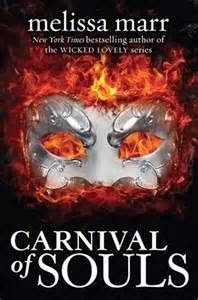

Melissa Marr's Carnival of Souls got a new look in paperback in September, along with a new title. Rather than being Carnival of Souls, it's now Untamed City: Carnival of Secrets. You may or may not remember, but this is a book that had a lawsuit brought upon it by someone who claimed to have trademarked the title Carnival of Souls. So it's not really a surprise that the paperback got a new title all together to avoid the mess (if you haven't read the story linked above, I suggest you do because it's a doozy).
In terms of the cover change itself, I didn't have an issue with the original, though it's not necessarily original or memorable. The paperback on the right, I think, is an improvement, though it certainly changes the entire feel of the book itself. In many ways, the redesign reminds me of the cover for Amy Garvey's Cold Kiss . I like how the cover does feel a little bit cold, which fits with the book's title and "secrets," if you will. In many ways, the paperback redesign also feels a little bit older to me, and it might have appeal to more adult readers than the hardcover design.
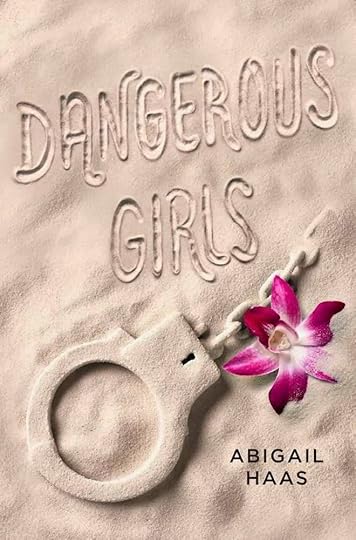

Abigail Haas, who you may know better as Abby McDonald, will see her psychological thriller Dangerous Girls get a new look in paperback this summer. I'm reading this book right now (which I'll talk about in a post later this week) and part of what attracted me to the book in the first place was the really standout hardcover image. It's so different. I love the use of sand, as it not only gives a sense of the story's setting -- it's on a tropical island -- but there's also something mysterious, intriguing, and maybe more than anything, there's something unsettling about the impermanence of the sand letters and handcuff. This is a story which looks as trust and mistrust, and I feel like the hardcover does a good job portraying that.
The paperback, which will be available May 6, gives a very different image on the cover and yet still somehow captures the feel of the story well. In many ways, it's more telling of what happens in the story (there is a dead girl) though I'm not sure it's different enough to stand out on shelves in the same way that the hardcover is. Is that a bad thing? Maybe or maybe not. Readers who like thrillers will easily see that in this cover, and maybe even more noteworthy, readers who like female-driven thrillers in adult fiction, like Megan Abbott or Gillian Flynn, may be tempted to pick this up because it's reminiscent of their covers. I love the font for the title a lot: it's fun in a way that is almost uncomfortable in context of the story and words themselves.
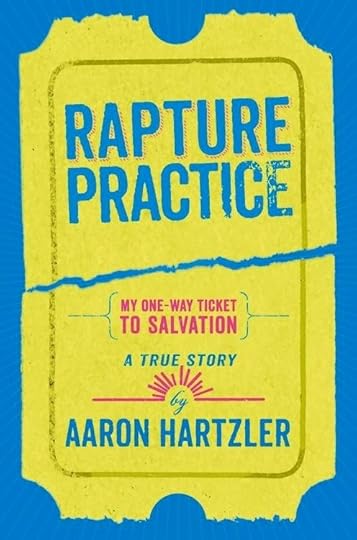

Rapture Practice by Aaron Hartzler was one of my favorite reads last year, and I'm really excited to talk about it a little more now that the Outstanding Books list is out and this book is on it (that's a spoiler for a future post). The cover on the left is the hardcover. It's not a bad cover, but I don't think it's the kind of cover that has people clamoring to pick it up by looks alone. It's pretty basic, and it doesn't give a whole lot of insight into what the story is about. You know the title -- which, while a great title, also doesn't tell you much -- and the tagline, "My one-way ticket to salvation" suggests this is a book about a person coming to terms with their faith.
That paperback though.
That paperback.
This redesign might be one of my all-time favorite redesigns because it nails the book perfectly, and not only does it nail the book, but it has massive reader appeal to it. Readers see this and they want to know the story. The boy on the cover just did something bad by cutting his tie. And his tie has a cross on it, so you know this is something serious. The tag line for the paperback changed quite a bit, too, and for the better. Rather than claiming this is a story about the author's salvation, it's instead "A true story about growing up gay in an evangelical family." That absolutely nails the story, and not only does it nail the story, it does so in a way that's really appealing and allows readers to know exactly what they're getting into. Perhaps they relate! Perhaps they're just curious! It's much more enticing and engaging than the prior one.
Also added on the paperback is a blurb from Maria Semple. What's interesting is her book, Where'd You Go Bernadette? is adult fiction, but it earned an Alex Award. So there's a less-than-subtle attraction to this YA memoir for adult readers, too. The image and tag line are completely teen friendly but that blurb invites older readers into the story too.
Rapture Practice will be available in paperback on June 10, and I think even though I bought a copy of the hardcover for my library's collection already, I'll also be picking up a paperback because it'll bring the story to even more readers.


Here's the second of the six books in this roundup of cover makeovers that not only got a new look in paperback, but it also got a new title. Boy Nobody by Allen Zadoff came out last summer, and the cover is on the left. Again, not a bad cover at all. The tagline doesn't tell us a whole lot about the story, but the image on the cover itself does a good job explaining what the story is about. It's action adventure and this has definite appeal to male readers (though I don't think in any way it is a cover that would turn off female readers).
The paperback, which will be available May 13, has a new title: I Am The Weapon. I think I like the new title, as it does a much better job telling readers what the story is, and as can be seen on the cover, there's no longer a tagline. Perhaps this is because the title is explanatory enough without further elaboration. The image on the cover changed, but it's not so drastic a change that the feel of the cover or story is different. Rather than being black, it's got a blue hue to it, and the character who is running is much more in the forefront than on the hardcover. There is a blurb from the Publisher's Weekly review on the paperback, and while I don't tend to love blurbs on covers, I feel like it works really well here. That it highlights the story is hard-edged and entertaining should sell the story to the exact right readership. This paperback also tells readers this is the first in a series, "The Unknown Assassin," which itself is printed on the cover.
The sequel to the book also got a bit of a title change, too, and it'll fit with the new one for this book: I Am The Mission.
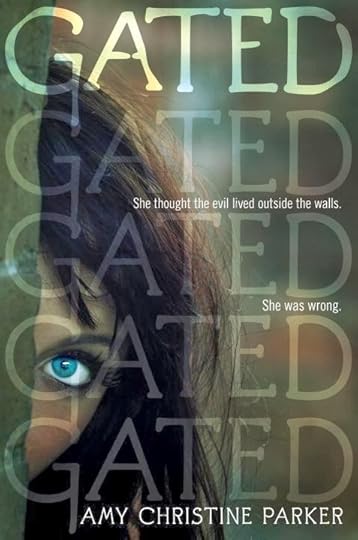
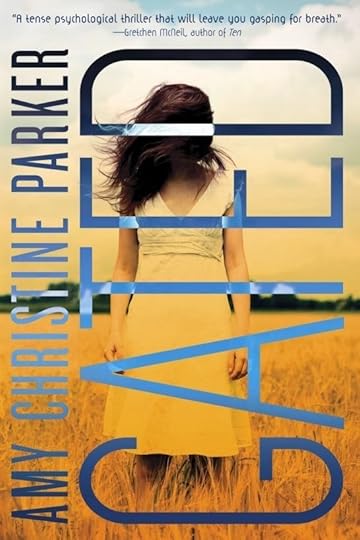
Would you ever guess by the title, tag line, or image that the hardcover on the left was not a dystopia but instead a psychological thriller about a cult? Because I wouldn't, and that's why when I was given a copy of Amy Christine Parker's Gated, it fell and fell and fell to the bottom of my pile of reading. I love cult stories, but I am not huge on dystopia. And the cover didn't compel me in the least either. Simply stated: it blends in. It's boring. I think the tagline doesn't do it any favors either: "She thought the evil lived outside the walls. She was wrong." It's generic.
But the paperback. I love the paperback. It has an entirely fresh feel to it and it feels like a psychological thriller, rather than blending into the sea of dystopians. I love that it's a font-driven design, and yet, I also love the girl who is on the cover. She's in a dress, but it's not a fancy one. It looks pretty generic, like the kind of thing a girl in a cult might be forced to wear. I love how the blue font plays against the orange-hued wheat field the girl is standing in, and I also think that the blurb use on the cover is a huge enhancement. You know immediately it's a psychological thriller.
We've seen a million covers with girls who have hair blowing in their faces, but it works here so well. You know there's something more going on here. That it's purposeful. This cover also seems to have a lot of crossover appeal to it, and again, like the Haas cover, I think that it is being done in a smart way. I'm much more tempted to pick this book up now than I was with the original cover. And since I don't think I bought this one for my collection when it was out in hardcover, I'm eager to get this series going at the library with the new look.
Gated will be available in paperback on May 27.


I don't even know what to say about this cover redesign, so I'll keep it pretty simple: why? Why did they insist on putting a girl doing duck face into the background of the paperback edition of Mindy Raf's Symptoms of My Insanity? It is not only scary but it also almost undermines the title, as well as what the book itself seems to want to be tackling. I'm positive there's some humor in this story, and perhaps that was the thinking behind it, but no. No. This was a real huge step back and makes little sense. I like the addition of the tag line, the removal of the oddly-darker-than-the-rest smiley face, but that girl. It kills the paperback cover for me.
I really wish the US edition of this book had gone with this look because I feel like it captures the feel of the story so much better without being a little ... horrifying.
What do you think? Which cover and title redesigns nailed it and which ones fall flat?







 Related StoriesEye-Focused Covers in 2014YA Reissue Cover Makeovers -- Updating for New Readerships2014 YA Cover Trends: A Look at What's to Come, Part 2
Related StoriesEye-Focused Covers in 2014YA Reissue Cover Makeovers -- Updating for New Readerships2014 YA Cover Trends: A Look at What's to Come, Part 2


Melissa Marr's Carnival of Souls got a new look in paperback in September, along with a new title. Rather than being Carnival of Souls, it's now Untamed City: Carnival of Secrets. You may or may not remember, but this is a book that had a lawsuit brought upon it by someone who claimed to have trademarked the title Carnival of Souls. So it's not really a surprise that the paperback got a new title all together to avoid the mess (if you haven't read the story linked above, I suggest you do because it's a doozy).
In terms of the cover change itself, I didn't have an issue with the original, though it's not necessarily original or memorable. The paperback on the right, I think, is an improvement, though it certainly changes the entire feel of the book itself. In many ways, the redesign reminds me of the cover for Amy Garvey's Cold Kiss . I like how the cover does feel a little bit cold, which fits with the book's title and "secrets," if you will. In many ways, the paperback redesign also feels a little bit older to me, and it might have appeal to more adult readers than the hardcover design.


Abigail Haas, who you may know better as Abby McDonald, will see her psychological thriller Dangerous Girls get a new look in paperback this summer. I'm reading this book right now (which I'll talk about in a post later this week) and part of what attracted me to the book in the first place was the really standout hardcover image. It's so different. I love the use of sand, as it not only gives a sense of the story's setting -- it's on a tropical island -- but there's also something mysterious, intriguing, and maybe more than anything, there's something unsettling about the impermanence of the sand letters and handcuff. This is a story which looks as trust and mistrust, and I feel like the hardcover does a good job portraying that.
The paperback, which will be available May 6, gives a very different image on the cover and yet still somehow captures the feel of the story well. In many ways, it's more telling of what happens in the story (there is a dead girl) though I'm not sure it's different enough to stand out on shelves in the same way that the hardcover is. Is that a bad thing? Maybe or maybe not. Readers who like thrillers will easily see that in this cover, and maybe even more noteworthy, readers who like female-driven thrillers in adult fiction, like Megan Abbott or Gillian Flynn, may be tempted to pick this up because it's reminiscent of their covers. I love the font for the title a lot: it's fun in a way that is almost uncomfortable in context of the story and words themselves.


Rapture Practice by Aaron Hartzler was one of my favorite reads last year, and I'm really excited to talk about it a little more now that the Outstanding Books list is out and this book is on it (that's a spoiler for a future post). The cover on the left is the hardcover. It's not a bad cover, but I don't think it's the kind of cover that has people clamoring to pick it up by looks alone. It's pretty basic, and it doesn't give a whole lot of insight into what the story is about. You know the title -- which, while a great title, also doesn't tell you much -- and the tagline, "My one-way ticket to salvation" suggests this is a book about a person coming to terms with their faith.
That paperback though.
That paperback.
This redesign might be one of my all-time favorite redesigns because it nails the book perfectly, and not only does it nail the book, but it has massive reader appeal to it. Readers see this and they want to know the story. The boy on the cover just did something bad by cutting his tie. And his tie has a cross on it, so you know this is something serious. The tag line for the paperback changed quite a bit, too, and for the better. Rather than claiming this is a story about the author's salvation, it's instead "A true story about growing up gay in an evangelical family." That absolutely nails the story, and not only does it nail the story, it does so in a way that's really appealing and allows readers to know exactly what they're getting into. Perhaps they relate! Perhaps they're just curious! It's much more enticing and engaging than the prior one.
Also added on the paperback is a blurb from Maria Semple. What's interesting is her book, Where'd You Go Bernadette? is adult fiction, but it earned an Alex Award. So there's a less-than-subtle attraction to this YA memoir for adult readers, too. The image and tag line are completely teen friendly but that blurb invites older readers into the story too.
Rapture Practice will be available in paperback on June 10, and I think even though I bought a copy of the hardcover for my library's collection already, I'll also be picking up a paperback because it'll bring the story to even more readers.


Here's the second of the six books in this roundup of cover makeovers that not only got a new look in paperback, but it also got a new title. Boy Nobody by Allen Zadoff came out last summer, and the cover is on the left. Again, not a bad cover at all. The tagline doesn't tell us a whole lot about the story, but the image on the cover itself does a good job explaining what the story is about. It's action adventure and this has definite appeal to male readers (though I don't think in any way it is a cover that would turn off female readers).
The paperback, which will be available May 13, has a new title: I Am The Weapon. I think I like the new title, as it does a much better job telling readers what the story is, and as can be seen on the cover, there's no longer a tagline. Perhaps this is because the title is explanatory enough without further elaboration. The image on the cover changed, but it's not so drastic a change that the feel of the cover or story is different. Rather than being black, it's got a blue hue to it, and the character who is running is much more in the forefront than on the hardcover. There is a blurb from the Publisher's Weekly review on the paperback, and while I don't tend to love blurbs on covers, I feel like it works really well here. That it highlights the story is hard-edged and entertaining should sell the story to the exact right readership. This paperback also tells readers this is the first in a series, "The Unknown Assassin," which itself is printed on the cover.
The sequel to the book also got a bit of a title change, too, and it'll fit with the new one for this book: I Am The Mission.


Would you ever guess by the title, tag line, or image that the hardcover on the left was not a dystopia but instead a psychological thriller about a cult? Because I wouldn't, and that's why when I was given a copy of Amy Christine Parker's Gated, it fell and fell and fell to the bottom of my pile of reading. I love cult stories, but I am not huge on dystopia. And the cover didn't compel me in the least either. Simply stated: it blends in. It's boring. I think the tagline doesn't do it any favors either: "She thought the evil lived outside the walls. She was wrong." It's generic.
But the paperback. I love the paperback. It has an entirely fresh feel to it and it feels like a psychological thriller, rather than blending into the sea of dystopians. I love that it's a font-driven design, and yet, I also love the girl who is on the cover. She's in a dress, but it's not a fancy one. It looks pretty generic, like the kind of thing a girl in a cult might be forced to wear. I love how the blue font plays against the orange-hued wheat field the girl is standing in, and I also think that the blurb use on the cover is a huge enhancement. You know immediately it's a psychological thriller.
We've seen a million covers with girls who have hair blowing in their faces, but it works here so well. You know there's something more going on here. That it's purposeful. This cover also seems to have a lot of crossover appeal to it, and again, like the Haas cover, I think that it is being done in a smart way. I'm much more tempted to pick this book up now than I was with the original cover. And since I don't think I bought this one for my collection when it was out in hardcover, I'm eager to get this series going at the library with the new look.
Gated will be available in paperback on May 27.


I don't even know what to say about this cover redesign, so I'll keep it pretty simple: why? Why did they insist on putting a girl doing duck face into the background of the paperback edition of Mindy Raf's Symptoms of My Insanity? It is not only scary but it also almost undermines the title, as well as what the book itself seems to want to be tackling. I'm positive there's some humor in this story, and perhaps that was the thinking behind it, but no. No. This was a real huge step back and makes little sense. I like the addition of the tag line, the removal of the oddly-darker-than-the-rest smiley face, but that girl. It kills the paperback cover for me.
I really wish the US edition of this book had gone with this look because I feel like it captures the feel of the story so much better without being a little ... horrifying.
What do you think? Which cover and title redesigns nailed it and which ones fall flat?







 Related StoriesEye-Focused Covers in 2014YA Reissue Cover Makeovers -- Updating for New Readerships2014 YA Cover Trends: A Look at What's to Come, Part 2
Related StoriesEye-Focused Covers in 2014YA Reissue Cover Makeovers -- Updating for New Readerships2014 YA Cover Trends: A Look at What's to Come, Part 2
Published on February 09, 2014 22:00
February 7, 2014
Links of Note: February 8, 2014

I've been really good about photo documenting my displays in the teen area since starting this job in 2012. It's helpful to me in not only thinking about what I'm doing, but it gives me a quick visual in what I might not be doing, too. The display above came out of an idea I had been wanting to do but never approached management about -- and then when it came up in management notes that adult services would be doing a blind date with a book display, I asked if I could in teen too. Voila! I love it. Not only is it a fun way to entice readers, but visually, it just looks really nice too. I wrote really short but enticing descriptions of the books and I'm eager to see how it plays out with readers.
On to this week's links! There's a little bit of everything, I think. And as usual, if there's something good I missed over the last couple of weeks (especially because it took me a week to fully recover from ALA), let me know in the comments.
Outstanding Books for the College Bound's list is finally live! I am so wildly proud of this list and love that it offers such a variety of books. I'm going to talk more in depth about many of the titles, as well as how to use and promote the list, in the coming weeks. But go! Dig in! There are 124 titles, 25 in each category (except for in social science, where we couldn't choose a final title and decided to only pick 24). Did you know this week was Dawn Schafer's 40th birthday? I never thought book characters aged. This post over at Rather Be Reading about Dawn and her legacy with the Babysitter's Club is fun. Should books for children that contain profanity come with a warning label? While I feel like this topic is so old and overdone and doing nothing but spinning wheels right now, it might be of interest because there's not only an initial post, but there's a nice followup from the publisher on the specific book being called into question. Every wonder what it might be like to serve on YALSA's Best Fiction for Young Adults (BFYA)? Edi, one of this year's committee members, talks about her experience and it's really interesting. Speaking of BFYA, here's a nice writeup about the teen feedback session at ALA. A little more on BFYA -- how about a look at the books which landed both on the BFYA list and on the Quick Picks list? Angela Frederick breaks down the overlap.This isn't a new post, but I found it while looking for book-inspired cookie cutters last weekend (if you don't look around for really off-the-wall things once in a while, you're probably lying). I've never quite understood or appreciated what a 3-D printer might be able to do, but when I saw that you could make cookie cutters on one, my perspective changed a little bit. Shakespeare cookie cutters! Made from a 3-D printer! This is really fun. I can't wrap my mind around how much money people are willing to pay to have an author at their book club. YES, pay the author to attend. But $750 for one book club appearance? I can't imagine what their dinner bill for the club must look like. Malinda Lo has a really valuable resource to YA and YA-friendly books about LGBTQ characters of color. This is a longer read, but it's certainly one to spend some time with: "First Times" in YA Lit. Fan of figure skating? Jennifer Rummel wrote a nice roundup of YA books (and some movies) where ice skating plays a role in the story. Check it out. Did you know February is women in horror month? Becky, over at RA for All (which I reiterate is a must-read blog for those who are reader's advisors or who love learning about books and reading, period, especially adult fiction), . Adele is blogging again at Persnickety Snark! I used to read her blog when she updated it regularly, and so her coming back is super exciting. I'm not a huge podcast listener -- I used to be able to listen to "Welcome to Night Vale" when it was warm enough to go for walks outside -- but I dig Adele's roundup of what she's listening to. Maybe I'll have to give them another shot. These books have secrets. These books have secrets I REALLY love knowing. So you probably know Judy Blume's covers are getting new looks. But did you know that they're being updated for middle grade readers, as well as young adult readers? Some books will get redesigns for one or the other and some will get dual redesigns. It's interesting (and a little confusing). Here's the scoop with the middle grade cover images. I'll be honest and say I'm not in love with the YA redesigns. The tag lines are pretty bad, especially. Women, own your accomplishments and be proud of your work.
Elsewhere for me:
I put together a timeline to black history in YA fiction over at Book Riot this week, and I think it might be one of my favorite -- and most eye-opening -- pieces I've done. Historical fiction is an area I'm fairly weak in, despite liking quite a bit of it, and I found my knowledge of black historical fiction to be even more lacking. But as it turns out, it's not necessarily my own lacking. It's just a genre REALLY lacking in YA fiction. I built a solid list, but thanks to the help of a bunch of awesome librarians, I was able to draw together some more. What's disturbing, though, is how the books fall in history. There's a lot in some areas and virtually nothing in others. WHERE are the books about teens living and making art during the Harlem Renaissance? What about the 80s and the era and birth of hip hop? We need more variety in black historical fiction. While we have some and it covers important ground, this needs to get better. Also bothersome is how little of this is recent. I'm presenting with three other teen librarians next month at the Public Library Association's conference, and we're seeking input on what we should talk about. We want to make this the kind of presentation that's useful to attendees who have questions and want answers, so we're soliciting questions people might have about teen programming. Have one? We'd love to know. I'm taking on partial responsibility for Book Fetish over at Book Riot, too. Here's this week's collection of bookish items and accessories you probably need in your life or need to give someone else in your life (a comic book dress!). Earlier this week on my post about YA urban fiction, and we had a reader comment asking about urban fiction for YA readers featuring LGBTQ characters. So I pulled together a quick list at Tumblr -- feel free to add more to this, if you know of others.







 Related StoriesLinks of Note: January 25, 2014Links of Note: January 11, 2014Links of Note: December 14, 2013
Related StoriesLinks of Note: January 25, 2014Links of Note: January 11, 2014Links of Note: December 14, 2013
Published on February 07, 2014 22:00
February 6, 2014
What I'm Reading Now


Dangerous Women edited by George R. R. Martin & Martin Dozois
I’m reading adult fiction! And short stories to boot! I’m pretty sure Martin’s “novella” in this collection is longer than a lot of the YA books I read, though. I’ve read the first story (Some Desperado by Joe Abercrombie) and thought it was OK, but not fantastic. It demonstrates why I usually don’t read short stories: there’s not enough time to develop an interesting plot with a satisfying conclusion, much less any character growth. This first story felt more like a chapter from a longer book than a full story in and of itself. It is one of the shortest in the collection, though, so I’m interested to see how I fare with the others.
The Shadow Throne by Jennifer A. Nielsen
This is the conclusion to the trilogy that began with The False Prince and continued with The Runaway King, all solid upper middle grade/lower YA fantasy. This final volume finds Jaron finally facing the war that's been threatening. One of the best things about this series is Jaron's voice, which can be simultaneously funny and painful.
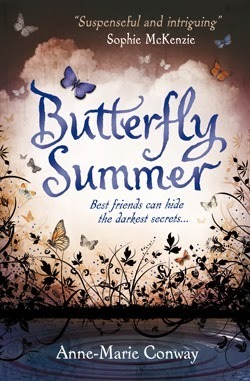
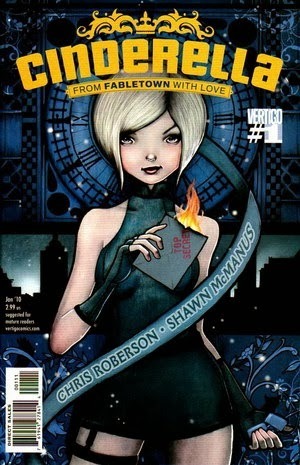
Butterfly Summer by Anne-Marie Conway
My sister-in-law, who teaches tweens in London, gave me this book as a Christmas gift. She told me it’s been popular with the kids in her class, and I can see why. It’s middle grade that’s pitch perfect for its marketed age group (8-12). It also reminds me a lot of books I enjoyed around that age. It’s fairly short, mostly realistic, with a few family secrets and very slight mystical elements. It’s a little bit fantasy, a little bit mystery, and a good bit coming-of-age. The plot hinges on a secret that’s pretty obvious to spot as an adult reader, but I’ve a feeling that a ten-year-old reader would figure it out at just the moment the author intended – perhaps just before the young protagonist does – and then delight in turning back the pages to spot the clues that she knows the author dropped.
Cinderella vol. 1: From Fabletown With Love by Chris Roberson & Shawn McManus
This is a spinoff of Bill Willingham's very popular Fables comic book series. I thought it was pretty well-done. Cinderella as a secret agent for the Fables is a clever idea, and I liked how Roberson and McManus re-worked the traditional Cinderella story into a James Bond-esque tale.
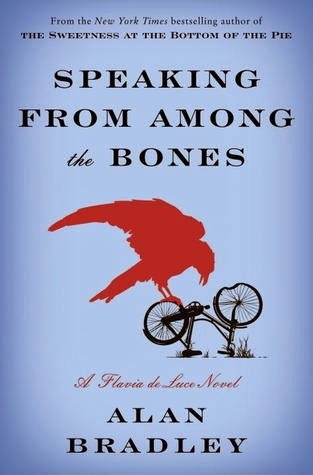
Speaking From Among the Bones by Alan Bradley
I really enjoy this series about precocious pre-teen and amateur sleuth Flavia de Luce. I’ve previously read all the books in print and am giving this one a try on audio, after hearing great things about the narration from multiple people. I have to admit I’m having a harder time with this volume. It could be that the mystery simply isn’t as engaging as the previous books, but I’ve a feeling it’s more to do with the voicing. Jayne Entwhistle’s narration is full of inflection – a bit overfull, actually. I find myself following the ups and downs of her voice rather than the meaning behind her words, and my attention wanders. I seem to be the only one who isn’t entranced, though.







 Related StoriesTin Star by Cecil CastellucciEye-Focused Covers in 2014A Year in Committee Life
Related StoriesTin Star by Cecil CastellucciEye-Focused Covers in 2014A Year in Committee Life
Published on February 06, 2014 22:00



